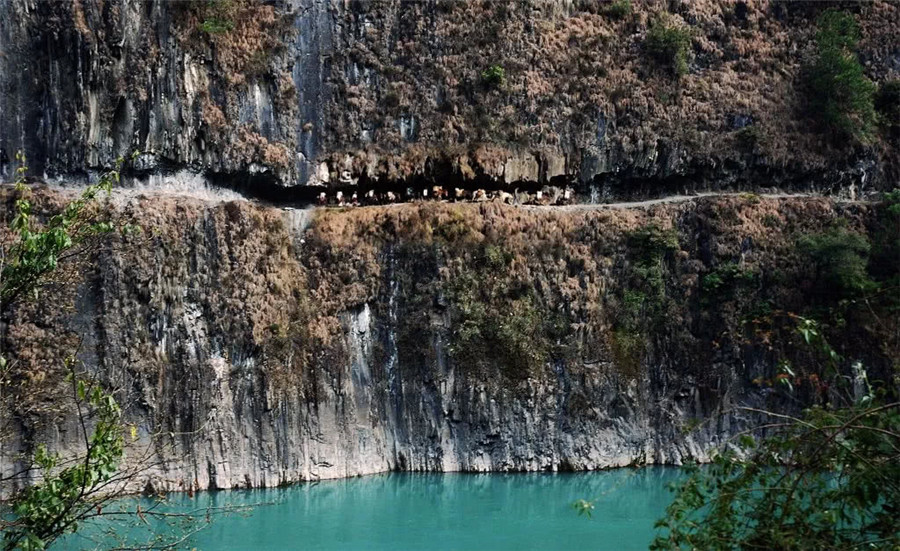Baofeng Ancient Town in Yunlong County
Baofeng Ancient Town(宝丰古镇) is one of the birthplaces of the ancestors of Yunlong, located in the county seat of Yunlong County, Dali Bai Autonomous Prefecture, Yunnan Province. It was once the governor of Yunlong Prefecture in the Qing Dynasty. Like the Lijiang Ancient Town, Baofeng Town also wnjoys thw long and profound history. The houses of Baofeng are typical Bai people’s residence style. Some are tall and sturdy, and some are small and exquisite. It was called Majing or Jinquanjing. In the early Ming Dynasty, due to the massive exploitation of well salt, the local salt industry was very prosperous. The court was set up for the salt industry. In the second year of Chongzhen period of Ming (1629), Yunlong Prefecture moved from Sanqi Village to Baofeng until 1929. For 300 years, Baofeng had been the seat of Yunlong Prefecture (county) and was the political, economic and cultural center of Yunlong.
How to get to Baofeng Ancient Town?
It is 150 km from Dali to Yunlong. Baofeng is 11 km from the county seat of Yunlong. Travelers can take the shuttles from Xiaguan to Yunlong Passenger Station. There are the mini-bus from passenger station to Baofeng Ancient Town. It takes you RMB 7. After 10 minutes, you can get off in Baofeng Ancient Town.
Main Attractions
Baofeng is a historic town, and the main attractions are the historic and cultural relics.
1.Baiyige Temple (白衣阁)
Baiyige Temple of Baofeng Town is located in the Delong Mountain, west of Baofeng Town, with altitude of 1710 meters. According to the ancient record of Baiyige, it is built in 1644 and finished in 1645. In its prosperous, there are Taihe Temple and Yuhuang Temple etc. standing besides the Bayige Temple. It was entitled as the key protection unit of Yunlong County.
2.Daluoma Post Office (大雒马邮亭)
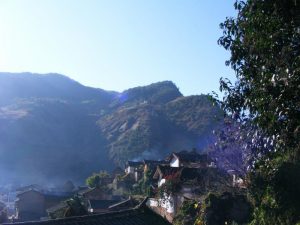
3.Fulong Temple (福隆寺)
4.Xiufeng Pagoda(秀峰塔)
5.Former Residence of Dong Ze (董泽故居)
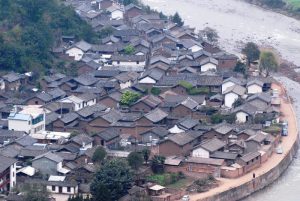
Useful Travel Tips
Ancient Roads in Yangbi County is one of the Best Tourist Attractions and Top Things to Do when travel to Dali, it introduces the main scenic spots, address, entrance tickets booking, The best time to visit, How to Get there, the highlights, facts, history, photos, visiting routes, travel tips, tour maps of Ancient Roads in Yangbi County(漾濞古驿道).|
Chinese Name: 漾濞古驿道
English Name: Ancient Roads in Yangbi County, Dali
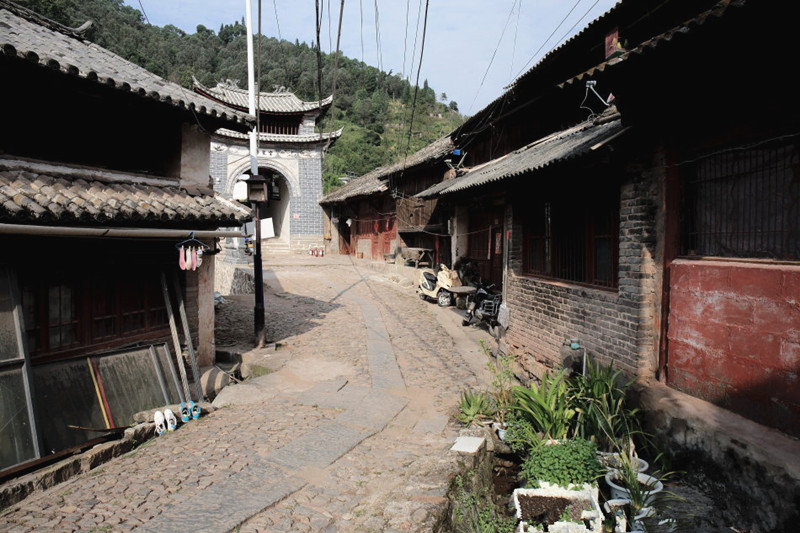
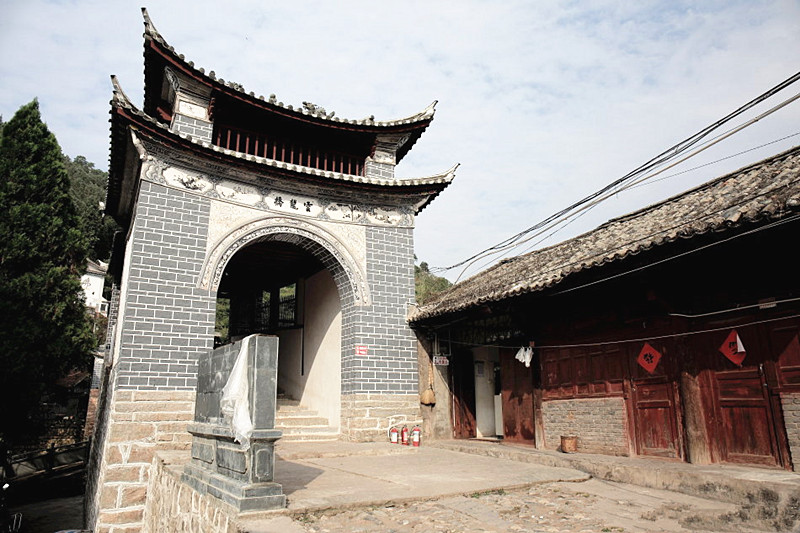
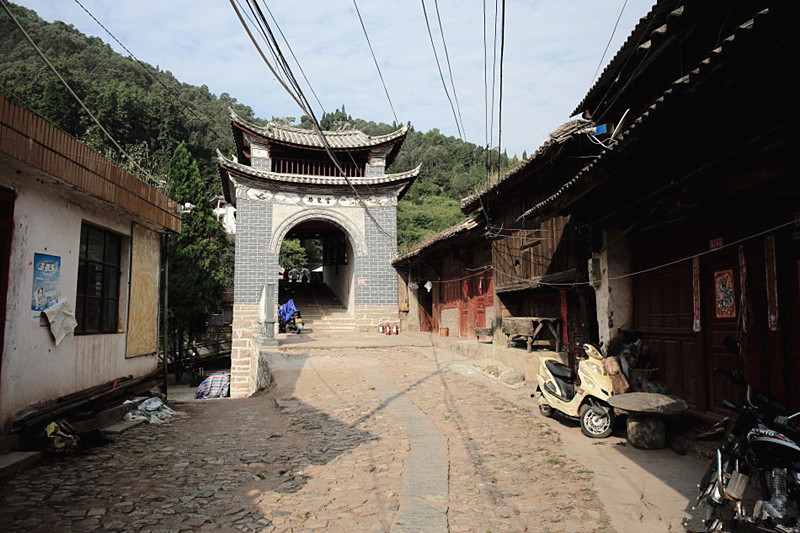
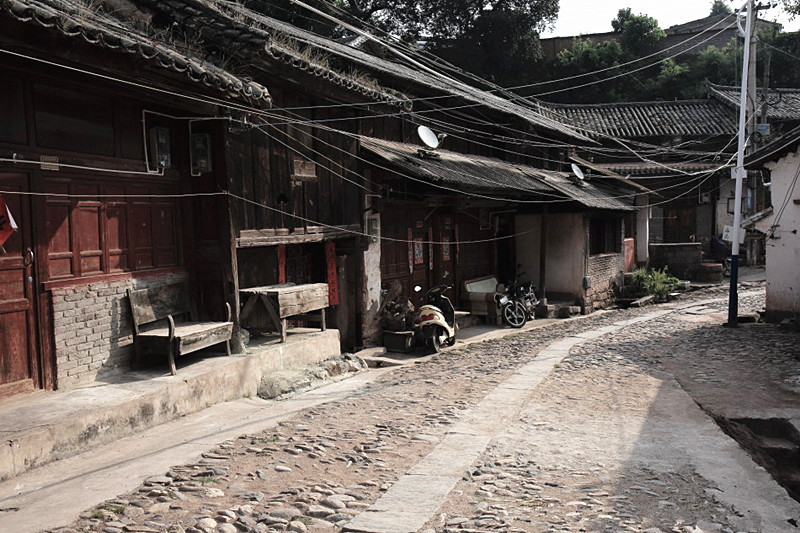




漾濞古驿道在漾濞县内古驿道有四条,分别为漾关驿道、漾永驿道、漾剑驿道、漾云驿道。古道西风瘦马,夕阳西下几时回。古驿道承载着历史的记忆,娓娓向人们走来。在时间的冲刷下,一条条古道抑或隐没在丛林、河滩、抑或山野之间,更多的驿道早已消失无形。时代在飞速发展,公路的修建使得昔日辉煌的各大驿道黯然失色,行人稀少、驿道空寂,安静得如梦境一样,满目旧日时光的痕迹,让它停留在另一个年代里。对于外来者,漾濞古道也是一个要让人怀旧的地方,因为在奔流不息的时间长河中,它流露和保存的是,更多的是一种往日的岁月,无奈被现代
The Tea Horse Road or chamadao (simplified Chinese: 茶马道; traditional Chinese: 茶馬道), now generally referred to as the Ancient Tea Horse Road or chamagudao (simplified Chinese: 茶马古道; traditional Chinese: 茶馬古道) was a network of caravan paths winding through the mountains of Sichuan, Yunnan and Tibet in Southwest China. This was also a tea trade route. It is also sometimes referred to as the Southern Silk Road or Southwest Silk Road, and it is part of a complex routes system connecting China and South Asia.
There are numerous surviving archaeological and monumental elements, including trails, bridges, way stations, market towns, palaces, staging posts, shrines and temples along the route. Besides the route’s importance for commercial activity, more significantly it was crucial for cultural exchange between the Indian subcontinent, Tibet and Southwest China. Especially, it was vitally important for the interchange of Buddhism between China and South Asia.
The Ancient Tea Horse Road, also known as Chamadao (茶马道) or Chamagudao (茶马古道), was a historic network of caravan routes that traversed the rugged mountains of Southwest China, connecting the tea-producing regions of Sichuan, Yunnan, and Tibet. This trade route, also known as the “Southern Silk Road” or “Southwest Silk Road,” played a vital role in the exchange of tea, horses, and other goods between China and its neighbors.
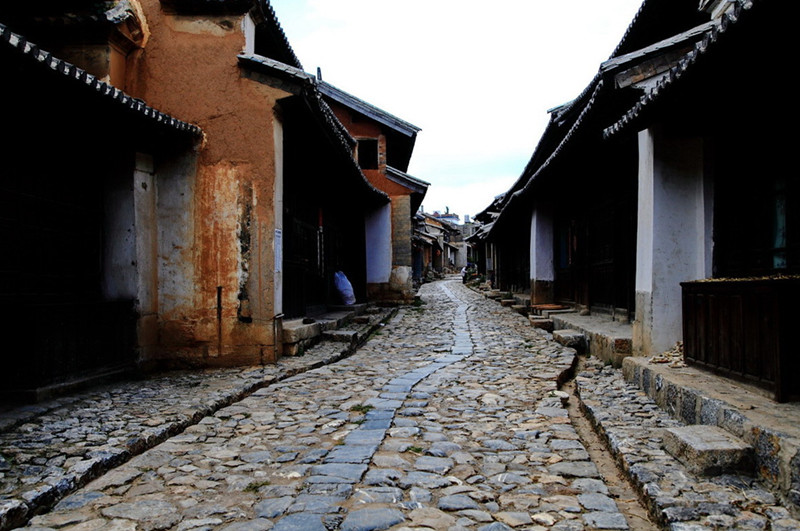
The Ancient Tea Horse Road (茶马古道, Chá Mǎ Gǔ Dào) is a historically significant network of caravan paths that linked the regions of Southwest China with Tibet, Southeast Asia, and even South Asia. It played a crucial role in the economic, cultural, and social exchanges between different ethnic groups and regions. Check more about The History of The Ancient Tea Horse Road.
Origins and Development
- Early Beginnings:
- The origins of the Tea Horse Road can be traced back to the Tang dynasty (618–907 AD) when the Tibetan Empire required horses for its cavalry and sought tea from the Han Chinese to satisfy the growing tea consumption among its people. The road’s importance grew during the Song (960–1279) and Yuan (1271–1368) dynasties, as the demand for horses and tea became even more critical.
- Main Goods Traded:
- Tea: The road is most famous for the trade of tea, particularly from the Yunnan and Sichuan provinces. The tea was transported in compressed bricks or other forms that were easier to carry over long distances.
- Horses: In exchange for tea, Tibetans would trade horses, which were essential for the Chinese military and agricultural purposes.
- Other goods traded included salt, sugar, textiles, spices, herbs, and various local products.
Geography and Routes
- Main Routes:
- The Tea Horse Road was not a single path but a network of routes that passed through various provinces in China, including Yunnan, Sichuan, and Tibet. These routes extended into Myanmar, India, Nepal, and beyond.
- Yunnan-Tibet Route: Starting from Pu’er and Lijiang in Yunnan Province, this route was the most famous. It crossed through the Hengduan Mountains, reaching Tibet and further to South Asia.
- Sichuan-Tibet Route: Originating from Sichuan Province, this route also connected to Lhasa and other parts of Tibet.
- Terrain and Challenges:
- The routes traversed some of the most challenging terrains in the world, including high mountain passes, deep river gorges, dense forests, and snow-capped peaks. The caravan traders, known as mabang (horsemen), faced extreme weather conditions, bandit attacks, and the risk of falling into ravines.
Cultural and Historical Significance
- Cultural Exchange:
- The road facilitated significant cultural exchange between the Han Chinese, Tibetans, Bai, Naxi, and other ethnic groups. This interaction led to the exchange of ideas, religious beliefs (especially the spread of Buddhism), art, and language.
- Historical Impact:
- The Tea Horse Road was instrumental in maintaining the political and economic balance between the Chinese empire and Tibet. The trade of tea and horses was not only a matter of commerce but also of diplomacy and strategy, influencing the relations between the regions.
- Preservation and Decline:
- The road’s use began to decline with the advent of modern transportation and political changes in the 20th century. However, its historical importance has led to efforts to preserve the remnants of this ancient trade route. In 2013, the Tea Horse Road was listed as part of the national key cultural relic protection units in China.
The ancient Tea Horse Road was a network of caravan paths winding through the mountains of southwest China. It was used as a commercial passage for transporting tea, salt and other commodities. Sometimes Chinese tea would be exchanged for Tibetan ponies. Historically, the ancient Tea Horse Road was almost the same as the western frontier of China.
Historical Significance
The Ancient Tea Horse Road was instrumental in fostering trade and cultural exchanges between Han Chinese and Tibetan regions from the Tang and Song Dynasties (618–1279 AD) until the early 20th century. The road was named for the trade of Chinese tea for Tibetan horses, a practice essential for China’s defense against northern nomads. The sturdy Tibetan ponies were highly valued by the Chinese military, making this trade crucial.
Major Routes
- Shaanxi-Gansu Tea Horse Road (陕甘茶马古道): This route was the primary passage for tea from mainland China to the west, exchanging tea for horses. It was an essential component of the broader Silk Road network.
- Tanggu Road (蹚古道): Originating during the Han dynasty, this route was significant for the tea trade in the southwest frontier. It connected Shaanxi merchants with the tea-horse markets, particularly flourishing during the Ming and Qing dynasties.
- Yunnan-Tibet Tea Horse Road (滇藏茶马古道): Formed in the late sixth century, this route began in the tea-producing areas of Yiwu and Pu’er in Yunnan, passing through Dali, Lijiang, and Shangri-La before reaching Lhasa in Tibet. Some goods were further re-exported to India and Nepal, making it an important trade link between China and South Asia.
- Sichuan-Tibet Tea Horse Road (川藏茶马古道): This route started in Ya’an, Sichuan, and extended to Lhasa, eventually reaching Bhutan, Nepal, and India. It was part of the larger Shaanxi-Kangding-Tibet Tea-Horse Road, acting as a critical bridge between Tibet and mainland China.
Cultural and Archaeological Heritage
The Ancient Tea Horse Road is rich in archaeological and cultural heritage. Along the route, numerous relics such as trails, bridges, market towns, staging posts, temples, and shrines have survived. These sites offer a glimpse into the vibrant trade and cultural exchanges that occurred over centuries.
Historic Sites in Sichuan
Sichuan Province, one of the key regions on the Ancient Tea Horse Road, boasts a variety of historic sites, including:
- Pingle Longshan Ancient Road in Qionglai City, part of the South Silk Road Ruins Scenic Area.
- Huicaikou Ancient Salt Road in Zigong, showcasing the region’s historical significance in salt production and trade.
- Guanyin Tower in Ya’an, reflecting the area’s rich cultural and religious history.
- Qingxi Pass Site of Tang Dynasty in Hanyuan County, an ancient military and trade post.
Historic Sites in Yunnan
Yunnan Province, with 86 cultural heritage sites related to the Ancient Tea Horse Road, includes:
- Yunnanyi Ancient Road in Xiangyun County, a well-preserved section of the road.
- Tiger Pass to Puchang River Section of the Ancient Post Road in Xiangyun County, demonstrating the road’s strategic importance.
Trade and Cultural Exchange
The road was not only a trade route but also a cultural conduit, facilitating the spread of tea culture from Yunnan to Tibet and beyond. The tea carried on this route, often in the form of tea bricks, was a staple in Tibetan diets, consumed with yak butter and salt. In return, Tibet sent horses, medicinal herbs, wool, and other goods back to China.
Porters along the route often carried heavy loads, sometimes exceeding their body weight. They were equipped with metal-tipped staffs to maintain balance and support their loads during rest. These journeys were arduous and dangerous, with traders braving treacherous mountain passes and inclement weather.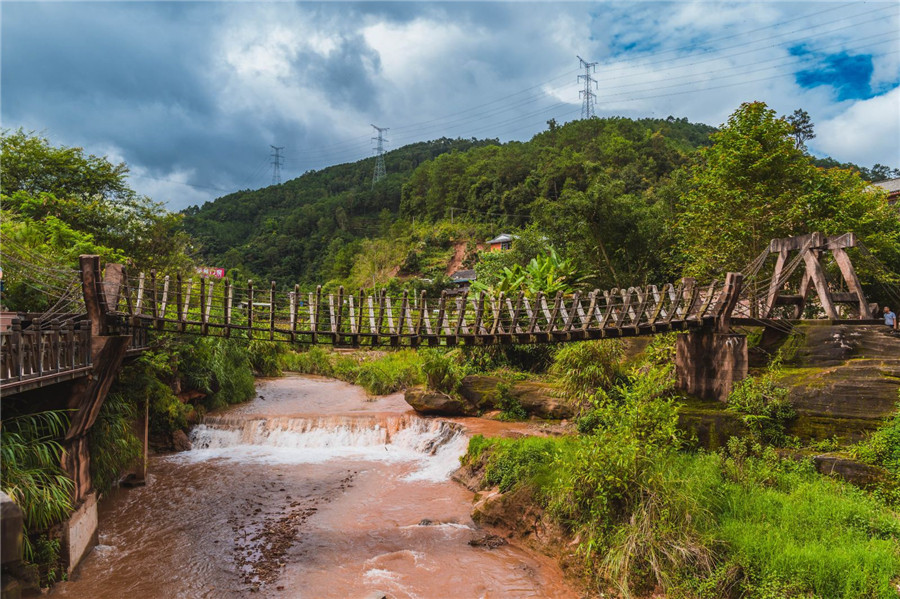
Legacy
Today, the Ancient Tea Horse Road is recognized as a significant cultural and historical relic. Some sections of the road and related sites have been designated as China National Key Cultural Relics Protection Units. The route’s legacy continues to be celebrated in modern China as a symbol of the historical ties between the Han Chinese and Tibetan peoples, as well as the broader connections between China and South Asia.
The Ancient Tea Horse Road remains a testament to the enduring power of trade and cultural exchange, and its historical significance is preserved through ongoing archaeological efforts and cultural preservation initiatives.
The Ancien Tea Horse Road in Yunnan
The Ancient Tea Horse Road in Yunnan, a vital trade route in Yunnan province, is dotted with 86 cultural heritage sites spread across 21 counties and cities. Below is a summary of some key locations:
Xiangyun County
- Yunnanyi Ancient Road (Yunnanyi Town): Located at 25°25′29″N 100°41′26″E.
- Xiaoshao to Huangcaoshao Ancient Road (Midian Town).
- Baisha Slope to Yongan Bridge Ancient Road (Midian Town).
- Tiger Pass to Puchang River Section (Midian Town).
- Xincun to Binchuan South Boundary Monument Section (Xiangyun Town).
- Zhenyang Gate (Gulou East Street, Xiangcheng Town): Positioned at 25°28′45″N 100°33′34″E.
Yangbi Section
- Dahe River Street Section (Pingpo Town): 240 meters long.
- Liziyuan to Dam Field Section (Pingpo Town): 550 meters, includes Voucher Bridge.
- Jinniu Village Mud Pass Section (Cangshan West Town): 100 meters long.
- County Bonan Section (Cangshan West Town): 900 meters long.
- Shuangmo Lane, Xiajie Village (Cangshan West Town): 400 meters long.
Yongping Section
- Jiaogou Mount Section (Yongping County).
- Wanma Guichao Section (Bonan Town): 140 meters long.
- Iron Works to Little Flower Bridge (Yongping County): 1600 meters long.
- Dahuajiao Section (Yongping County).
- Bonan Mount Section (Yongping County).
- Shanyang Old Street Section (Yongping County).
Midu Section
- Yonghe Village (Mizhi Town): Located at 25°10′03″N 100°31′21″E.
Heqing Xiangmian Mountain Section
- Located in Heqing County, Songgui Town, Jindun Township.
Jianchuan Section
- Located in Shaxi Town, Jianchuan County at 26°19′12″N 99°51′03″E.
Simao Section
- Caiyang River Section (Yutang Village Committee, Yixiang Town, Simao District).
- Jiejipo Section (Simao District).
Ning’er Section
- Cha ‘an Tang Ancient Road (Ning’er County): Starts at Minzhu Village, ends at Xingguang Village.
- Korie Tea Horse Road (Ning’er County): 4.38 km long.
- Peacock Screen Tea Horse Ancient Road (Ning’er County): 27 km long.
Yulong County
- Seventy-Two Lines (Taian Township, Longpan Township).
Shangri-La City
- Twenty-Four Turn Sections: 38 km long in Tiger Leaping Gorge.
- Twelve Rail Section: 8 km long in Tiger Leaping Gorge Township.
Longyang District, Baoshan City
- Shui Shi Kan Terraced Cloud Road (Shuizhai Village, Shuizhai Township).
- Guanpo Ancient Road Flagstone Road (Guanpo Village).
- Shek Ma Shan to Wu Tau Tong Ancient Road (Qinggangba Village, Hanzhuang Town).
- Old Stone Path of the Seventy-Six Roads in Lingshui Turnip (Shuijing Village).
- Gaoligong Mountain Beizhai Public House Dongpo Ancient Road.
- Gaoligong Mountain Nanzhai Public House Dongpo Ancient Road.
- Ancient Eastern Slope Trail at Dafengkou.
Tengchong Section
- Beizhai Public House West Slope Ancient Road Flagstone Road (Jietou Town, Tengchong City): Positioned at 25°32′39.1″N 98°45′33.4″E.
- Chengmen Cave West Slope Ancient Stone Road (Mangba Town, Tengchong City): Positioned at 24°56′00.8″N 98°44′41.5″E.
Longchuan County
- Shanmu Longshan North Slope Ancient Road (Huiguo Township): 5 km long, 3.2 km extant.
- Fir Cage Shanxi Slope Ancient Road (Huiguo Township).
Lianghe County
- Maofu Ancient Road Flagstone Road (Maofu Village, Jiubao Township): Positioned at 24°47′43″N 98°11′56″E.
Deqin County
- A Dunzi Section.
- Meili Section.
Lijiang Ancient City District
- Qiu Tang Guan Tea Horse Ancient Road Section.
- Shuhe Tea Horse Ancient Road Section.
- Horseshoe Print Stone Path.
Yuan County, Puer Town
- Ruins of Guang’en Bridge (Minjiang Village, Enle Town).
- Stone Carving of the Passing Gate at Xiaoshuijing Liangzi.
- Ancient Tea and Horse Route in the Wailing Mountains.
These ancient routes reflect the rich cultural and historical significance of the Tea Horse Road in Yunnan.
The Ancient Tea Horse Road in Sichuan
The Ancient Tea Horse Road, or Chamadao, in Sichuan is rich with historical sites, reflecting the vibrant history of trade and cultural exchange that took place along this ancient route. Below is an overview of notable locations along the Tea Horse Road in Sichuan, categorized by their respective regions:
Chengdu Area
- Pingle Longshan Ancient Road: Located in Pingle Town, Qionglai City, within the South Silk Road Ruins Scenic Area.
- Shuanmaling Ancient Road, Linji: Situated in Linji Town, Qionglai City.
- Tiantai Mountain Eart Stream, Zijing Village Ancient Road: Found in Tiantaishan Town, Qionglai City.
- Jiaguan Gongdian Ancient Road: Located in Jiaguan Town, Qionglai City.
- Site of Ancient Fire (Salt) Well of Oil Press: Situated in Huojing Town, Qionglai City.
- Lining Waist Rock Tea Horse Ancient Road: Located in Chaoyanghu Town, Pujiang County. The pathway runs from the old pine tree on the top of the lined waist rock to the ancient pathway on the shore of Changtan Lake, stretching 470 meters.
- Songmau Ancient Road (Lung Chi Section): Found in Longchi Town, Dujiangyan City.
Zigong Area
- Lok Shan Square: Located in the Ziliujing District.
- Huicaikou Ancient Salt Road: Also in the Ziliujing District.
- Mugye Beach Pier: Situated in the Gongjin District, consisting of two piers built during the Kangxi and Guangxu eras of the Qing Dynasty.
- Gong Jing Old Street Salt Road: Located in the Gongjin District.
- Salt Wharf in Xian Town: Found in the Yantan District.
Luzhou Area
- Guangming Ancient Road: Located in Fuzi Town, Lu County. The road runs southeast-northwest with a length of 1,091 meters and a width of 1.7 to 2.9 meters.
- Pauline Street Post Road: Situated in Longmatan District with a length of 810 meters.
- Shawan Post Road: Found in Jiangyang District.
- Fengming Post Road: Located in Hejiang County.
- Bailu Post Road: Also in Hejiang County.
- Xiantan Ancient Post Road: Found in Hejiang County.
- Dashichuanqian Post Road: Situated in Xuyong County.
- Monkey Ridge Chuanqian Post Road: Also in Xuyong County.
- Guandou Village Chuanqian Post Road: Located in Xuyong County.
- Chishui River Tea Horse Post Road: Found in Xuyong County.
- Erlang Post Road: Situated in Gulin County.
Ya’an Area
- Guanyin Tower: Located in Yucheng District.
- Jingju Nunnery Stone Archway: Found in Mingshan District.
- Yu Palace: Also in Mingshan District.
- Ganlu Ling Quan Courtyard Stone Archway: Situated in Mingshan District.
- Imperial Tea Garden: Located in Mingshan District.
- Tianti Ancient Path: Found in Mingshan District.
- Ganxipo Tea Horse Ancient Road Post Site: Situated in Tianquan County.
- Bian Tea Official Warehouse: Located in Tianquan County.
- Feixian Pass and South Boundary Archway: Found in Lushan County.
- Saddle Waist Cliff Inscription: Located in Lushan County.
- Rebuild the Road Monument of Daxiangling Bridge: Situated in Xingjing County.
- The Site of Gongxing Tea from the Qing Dynasty: Also in Xingjing County.
- Qingxi Pass Site of Tang Dynasty: Found in Hanyuan County.
- Ruins of Qingxi Ancient City in the Qing Dynasty: Located in Qingxi Town, Hanyuan County.
- Ruins of the 24 Daoguai Ancient Road: Situated in Hanyuan County.
- Yangquanmen Ancient Road Site: Found in Qingxi Town, Hanyuan County.
Aba Area
- Baizhangfang Ancient Plank Road: Located in Ganbao Township, Li County, near the Baodian Temple.
- Stone Carvings of Sui and Tang Dynasties in Putou Mountain: Situated in Putou Township, Li County.
- Kegu Plank Road: Located in Kegu Township, Wenchuan County. The site includes two Qing Dynasty inscriptions.
Ganzi Area
- Hualinping Tea Horse Ancient Road: Situated in Xinglong Town, Luding County.
- Fo’er Cliff Tea Horse Ancient Road: Found in Lengqian Town, Luding County.
- Yingge Mouth Tea Horse Ancient Road: Located in Batang County.
Liangshan Area
- Ganluo Qingxi Gorge Ancient Road: Situated in Pingba Township, Ganluo County.
- Dingshan Bridge and Lingguan Inscriptions in Yuexi: Found in Dingshan Township, Yuexi County.
- Dengxiangying Ancient Post: Located in Xide County.
- Xide Mianshan Camp Site: Situated in Mianshan Town, Xiande County.
- Yalong River in Mianning: Found in Mianning County.
- Songpingguan: Located in Huili County.
These locations provide a fascinating glimpse into the historical and cultural significance of the Ancient Tea Horse Road in Sichuan.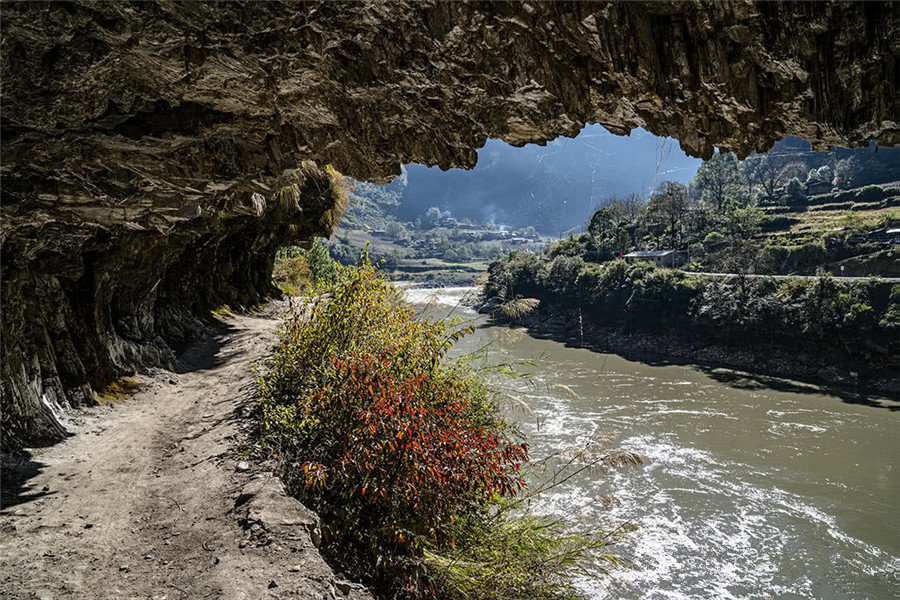
The Anceint Tea Horse Road in Guizhou
Ancient Roads and Historical Sites in Guizhou Province
| Name | Location | Description | |
|---|---|---|---|
| Changpolin Old Road | Baiyun District, Guiyang City | Located in Changpo Ling Forest Park, this 3 km long masonry road was built during the Ming dynasty. | |
| Centipede Slope Ancient Road | Saparing Town, Xiuwen County, Guiyang City | The post road is about 5 km long, and the Centipede Bridge is a three-hole arch bridge, 41m long and 5m wide, spanning the Cat Cave River. | |
| Old Black Mud Post Road | Qingzhen City | Built during the Hongwu period of the Ming dynasty, this road is now 5 km long and made of green stone. | |
| Black Mud Wharf | Qingzhen City | Built in the 16th year of the Daoguang era of the Qing dynasty (1836). | |
| Qing Yan Ancient Road | Qingyan Town, Huaxi District, Guiyang City | Built during the Wanli period of the Ming dynasty, this road is now 8 km long. | |
| Qixingguan Ancient Post Road | Yangjiawan Township, Qixingguan District | The surviving ancient post road is 2 km long and 1-2m wide. | |
| Shaanxi Association House | Chengguan Town, Qixingguan District, Bijie | Also known as the “Spring and Autumn Ancestral Hall,” it was built during the Qianlong period. It consists of various buildings including a theatre, halls, and towers. | |
| Sibao Old Road | Yan Chang Town, Weining County | Located in the southern part of the village of Sibao, it was built in the Ming dynasty during the Hongwu period and survives for about 10 km. | |
| Ying Hong Ancient Road | Jinduo Township, Weining County | Located in Ying Hong Village, the masonry road is about 3 km long, with the existing section from Guanyin Yan to the old town street along the Kedu River. | |
| Six Hole Bridge Long Beach | Caohai Town, Weining County | Built in the Qing dynasty during the Xianfeng period and repaired during the Tongzhi period. The bridge spans the Dazhong River and is a three-hole stone arch bridge. | |
| Kam Tong Ancient Road | Huangniatang Township, Dafang County | The existing 2 km long road was built in the Ming dynasty and is paved with stone. | |
| Goya Old Road | Shuangshan & Zhuyuan Townships, Dafang County | Built in the 17th year of the reign of Hongwu (1384), it is now about 5 km long. | |
| Guli Old Road | Guli Township, Qianxi County | Built in the 17th year of the reign of Hongwu (1384), it is now about 2 km long. | |
| Parrot’s Beak Old Road | Shuitang Township, Hezhang County | Located in Shuitang Village, it was built during the Hongwu period of the Ming dynasty and is about 3-4 km long. | |
| Yishenglong Trading Company | Drumfield Street, Jinsha County | Also known as “Rome Street Salt House,” it was built in the Qing dynasty. The building is laid out in the “Dragon Gate” style, consisting of various rooms and a salt storehouse. | |
| Ancient Road of the Yutang River | Jinsha County | ||
| Yidu Rock Carving | Qingchi Township, Jinsha County | ||
| Qing Chi Jiangxi Association House | Qingchi Township, Jinsha County | ||
| Luo Qi’s Mei’s Festival of Filial Piety | Jinsha County | Built in the fifth year of the Daoguang era (1825), it is approximately 9 metres high. | |
| Jigongbei Old Post Station | Guanglin County | ||
| Guangsoling Ancient Post Road | Guanglin County | Includes the ruins of the Ba Ling Bridge. | |
| Goshulou Sekidai | Guanglin County | ||
| Anlong Ancient Post Road | Guanglin County | ||
| Panjiang Bridge Stone Carving Group | Guanling County, Anshun City, & Qinglong County | ||
| The Ancient Road from Daitieguan to Canziyao | Liuzhi District, Liupanshui City | ||
| Old Soft Bridge Post Road | Panzhou City, Liupanshui City | Includes the Welcome Bridge. | |
| Xiaojiezi Ancient Road | Panzhou City, Liupanshui City | ||
| Huopu Ancient Road | Panzhou City, Liupanshui City | ||
| Chating Ancient Road | Panzhou City, Liupanshui City | ||
| Mothballed Old Road | Panzhou City, Liupanshui City | Also known as the Golden Land Ancient Road. | |
| Plumtree Old Road | Panzhou City, Liupanshui City | Also known as the Great Water Well Ancient Road. | |
| Pingguan to Shengjingguan Ancient Road | Panzhou City, Liupanshui City | ||
| Shaoshang Ancient Road | Panzhou City, Liupanshui City | Also known as the Two Rivers Water Gully Ancient Road. | |
| Shiguan Old Road | Panzhou City, Liupanshui City | ||
| Panjiang Bridge Stone Carving Group | Qinglong County, Qianxinan Prefecture, Guanling County, Anshun City | ||
| Pan River Bridge Old Road | Qinglong County, Qianxinan Prefecture | ||
| The Ancient Road of Halfpond | Qinglong County, Qianxinan Prefecture | ||
| Angul Pahang | Angu Township, Qinglong County | Built in 1826, it is a brick and porcelain structure with four columns and three single doors. | |
| Pinehill Temple | Pu’an County | ||
| Daitieguan to Canziyao Ancient Road | Pu’an County, Qianxinan Prefecture |

Historical value
Guangen Bridge (Minjiang Village, Zhen Yuan County)
- Historical Value:
- The Guangen Bridge, originally built in the early Qing dynasty, was a significant structure with stone piers and wooden frames. Over the years, it faced multiple destructions due to floods and fires, but it was continually rebuilt during the Qing dynasty. The bridge played a crucial role in connecting the community until it was finally destroyed by flooding during the early liberation period of China. Only four stone piers remain today, with one preserved on the west bank.
- Current Status:
- The remnants of the bridge serve as a historical landmark, reflecting the engineering practices of the Qing dynasty and the importance of river crossings in ancient China.
Bunakuo (Artemisia Plain, Guangle Village)
- Historical Value:
- “Bunakuo,” meaning “Artemisia Plain” in Naxi, was the largest market town on the eastern route of the ancient Tea Horse Road. This location is rich in cultural relics, natural landscapes, and ethnic culture, particularly Naxi Dongba culture and the Guzong culture created by Tibetan descendants.
- Tourism Significance:
- Today, Bunakuo is recognized for its intertwining natural scenery and cultural heritage, making it a valuable site for both historical research and tourism.
Safeguard and Future Prospects
- Protection Efforts:
- The Tea Horse Ancient Road, which includes sites like Bunakuo and others, was declared a national key cultural relic protection unit by The State Council of the People’s Republic of China on March 5, 2013.
- Future Development:
- The legacy of the Tea-Horse Road is being leveraged to promote the Sichuan-Tibet Railway, a project aimed at connecting cities like Chengdu and Lhasa, as part of China’s 13th Five-Year Plan. This railway is expected to bring significant economic benefits to the regions it traverses.
These sites and the legacy of the Tea-Horse Road represent important cultural and historical elements in China’s development and tourism.
Overview of the Tea Horse Trade Route
The Tea Horse Trade Route, also known as the Southern Silk Road, is an ancient network connecting Southeast Asia to southwest China and Tibet. It stretches over 1,000 miles from Sichuan province through Yunnan’s mountains and the Tibetan plateau up to Lhasa. Historically, it facilitated the exchange of goods like horses, silver, tea, salt, ivory, and more. Today, while many original paths have been replaced by modern infrastructure, remnants of the old trails still traverse four Chinese provinces and three countries (China, Laos, Burma).
Travel Routes and Itineraries
- From Sichuan:
- Chengdu to Kangding: Head west from Chengdu to Kangding, a gateway to Tibet.
- Chengdu to Xichang: Travel south through Xichang and cross into northern Yunnan, heading towards Lijiang.
- From Yunnan:
- Kunming North: Travel from Kunming towards Sichuan’s Tibetan areas.
- Kunming South: Explore the tea mountains of Pu’er, Jinghong, and onward to Laos and Thailand.
- Flexible Itinerary:
- A suggested route includes traveling from Chengdu to Kangding, then south through Ganzi to Yunnan Province, visiting Tiger Leaping Gorge and Lijiang. You could also explore Laos and border regions.
Key Destinations and Experiences
- Dali, Yunnan: A historic hub on the Tea Horse route, Dali offers a base for exploring the old trading paths. Known for its local art and vibrant atmosphere, it’s also a great spot for buying unique items and enjoying the Bad Monkey Bar.
- Leshan, Sichuan: Famous for the Giant Buddha and sweet-skinned roast duck (“Leshan tianpi ya”). Seek out duck shacks away from major tourist spots for better prices and quality.
- Lijiang, Yunnan: Known for its Naxi culture, Lijiang features unique dairy dishes like salty cheese and Naxi Baba (bread with fried cheese). It’s a gateway to the mountainous regions and offers a rich cultural experience.
- Kangding, Sichuan: Ideal for customized jewelry and exploring Tibetan culture. Kangding is a good base for exploring the Garzê (Ganzi) Tibetan Autonomous Prefecture.
Practical Travel Tips
- Visa Requirements:
- China: A 30-day tourist visa is common, with options for extensions. For longer stays, consider a 180-day visa. The 10-year visa is available for Americans but requires leaving the country every 60 days.
- Laos: Obtain a visa in Kunming or at the border town of Mengla. Ensure all visas are in order to avoid delays.
- Travel During Off-Peak Times: Avoid China’s peak travel times around the Spring Festival and Golden Weeks (May and October) to escape the heaviest crowds.
- Transportation:
- Buses: Long-haul bus rides are common and can be quite rough, especially in remote areas. Hitchhiking is an option in some regions.
- Comfort Options: Consider renting an SUV or flying between major destinations if budget allows.
- Local Insights:
- Tibetan Autonomous Region vs. Tibetan Autonomous Prefectures: Travel in Tibet requires a special visa and is often restricted. Western Sichuan and Yunnan’s Tibetan areas are more accessible but can still face travel restrictions during political unrest.
- Culinary Highlights:
- Sichuan Cuisine: Enjoy spicy street food and noodle varieties in Chengdu.
- Yunnan Cuisine: Try Crossing the Bridge Noodles in Kunming and explore local tea in the Pu’er region.
- Hiking and Outdoor Activities: For wilder hikes, consider hiring local guides. Popular hikes include Tiger Leaping Gorge and routes in western Sichuan and Yunnan.
Cultural Considerations
- Ethnic Diversity: Southwest China is home to diverse ethnic groups such as the Bai, Dai, Naxi, Tibetans, Yi, and Qiang. Understanding their customs and cultures will enrich your travel experience.
- Local Issues: Be aware of political sensitivities, especially in Tibetan areas, and exercise discretion in discussions about Tibetan issues.
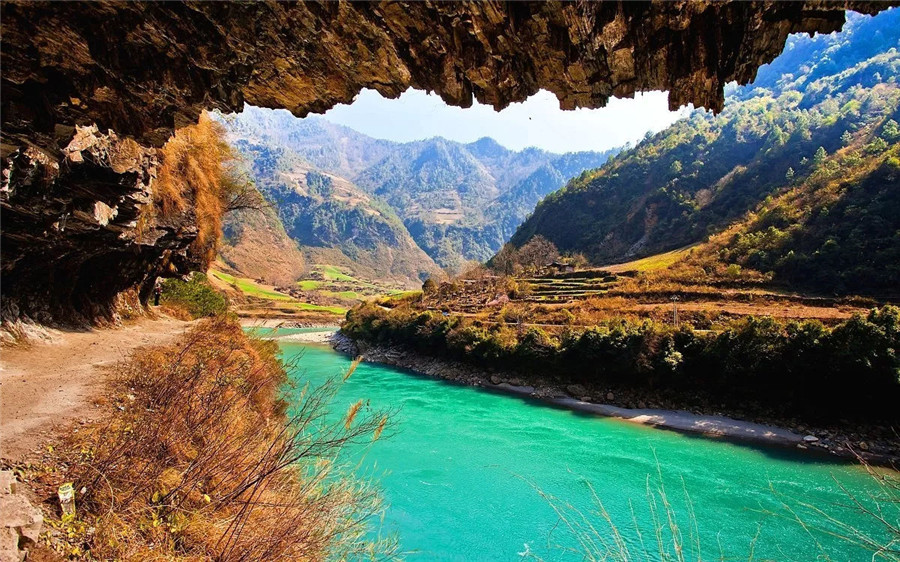
Choose a route. Or not. The established routes radiate from larger towns in Sichuan and Yunnan provinces in southwest China. From Sichuan’s capital, Chengdu, you can head west to Kangding in Sichuan province, and the doorway to Tibet. Or south from Chengdu into Xichang, and across the mountains into northern Yunnan and Lijiang. Starting in Yunnan, you can head north from Kunming towards Sichuan’s Tibetan areas, or head south through the tea mountains of Pu’er and towards Jinghong, then Laos and Thailand. Or, you can drift around the network for as long as you can. I lived in China for 14 years—12 of them in Sichuan—and traveled these routes several times, once for a six-month stint. I’m partial to heading west from Chengdu to Kangding, then south by southwest through Ganzi to Yunnan Province, taking in Tiger Leaping Gorge and Lijiang. There are many ways to skin this cat: I once traded a bottle of booze for a bike and rode across Laos to Mengla and the border of China, then traded the bike for a bus ticket to Jinghong, where I was able to make my way north to Dali and eventually back home to Chengdu.
If you’re short on time, start in Dali. If you don’t have weeks and months to explore the network, head to Dali, in southwest Yunnan, and branch out along the old trading paths from there. Dali is a historic Tea Horse trail hub and these days it’s a little touristy, but it makes for a good base, and the banana pancakes are plentiful. It’s also my go-to place to buy memorable things, like hemp jackets and silver, or a bag of P’uer tea. Sure, everybody else shops here too, but a lot of Chinese artists have come here to escape the crush of the city and have left their mark on the place. They are the modern heirs of the sages, musicians, and painters who’ve always been here in some form or another, and I’ve found that a discerning trader can find a good deal on local art in Dali. Plus, it has the Bad Monkey Bar, a pirate’s den with live music and no closing time.
Southwest China is a little different. The majority of the people you meet will probably be Han, China’s majority ethnic group, but southwest China is more diverse than the rest of the country, because the region is somewhat of a historical outlier. Yunnan was an independent kingdom for several centuries, and Sichuan, surrounded by high peaks, was considered the edge of the earth for people in the Imperial capital. Minorities have managed to keep their customs and language intact through the transition from Imperial China to Communist China. Beyond Han, the major ethnic groups around this route are Bai, Dai and Naxi in Yunnan; and Tibetans, Yi, and Qiang in Sichuan. The Yi were once known as raiders and rebels, but that ended when Communism took over China, and they are now a marginalized group. The Qiang are a smaller group of mountain people who took to the lower peaks and valleys, just above the Han and just below the Tibetans—they’re famous for the tall stone towers that dot their villages. The Dai are closely related to Thai and Laotian people.
Load up on Sichuan food. One of the great perks of this trail is Sichuan cuisine. The lowlands around Chengdu have the spicy, savory fare you‘ll recognize from restaurant menus closer to home, and so much more. Try as many noodle varieties as possible. In Chengdu, get your fill of late-night street food, especially Sichuan spicy skewers or a bowl of meat-sauce noodles (zhajiang mian). And you can rarely go wrong with lazi ji (spicy chicken), yuxiang rousi (pork in fish sauce), and shuizhu roupian (stewed meat in a spicy red broth of bamboo shoots, peppers, and other vegetables).
Supersize the visa. Travelers to China tend to get 30-day tourist visas, with the option to extend at least once, but usually three times. This often involves leaving the country to renew at consulates in Hong Kong or Chiang Mai before re-entering China. Visa extension rules are arbitrary, sometimes flexible, and changeable. Sometimes there’s a way around having to leave the country to renew—perhaps at the Public Security Bureau in larger towns—but don’t count on it. If you plan on a longer or open-ended stay, try for the 180-day tourist visa from the start (usually from the Chinese consulate in your home country) to save some trouble and cash. Increase your chances by being really specific about your planned activities when applying for the visa. There is a 10-year visa available to Americans only, a concession wrangled out by the Obama administration, a few years ago. The visa is supposed to serve business travelers, Americans in Hong Kong and Singapore, and other frequent visitors to China. The downside is you have to leave the country after a stay of only 60 days. Might be overkill for the average tourist.
Avoid China’s seasonal rush hours. Three times a year, China’s massive population takes to the nation’s planes, trains, and automobiles. First, there are the weeks around the Spring Festival, (late January and early February) when people go home to see family or travel. The other two are during the Golden Weeks: the major Chinese work holidays of May 1-7 and October 1-7. And even if everybody knows that traveling at these times means delays and heaving crowds, it doesn’t stop them. Some try and go the week before or the week after, but this just spreads the throng more evenly over a three-week period. There is no escaping the fact that China has more than a billion people, but you can dodge the worst of the crowds by traveling when everyone else is stuck in their cubicle.
Go out of your way for Leshan duck. Leshan, in southern Sichuan province, is where visitors go to ogle the striking Giant Buddha, carved out of a cliff face during the Tang dynasty. But it’s also famous for sweet-skinned roast duck (“Leshan tianpi ya”), made by stewing the fatty bird in a special sauce to make the skin sweet and crispy. You can get it from lots of places near the Giant Buddha, but the further away from it you can wander and still find a duck shack (look for bronzed ducks hanging in the window) the better: places close to the Buddha tend to charge tourists more.
Prepare for long bus rides. There are many ways to get around the old trade route: buses, trains, cars, motorbikes and bicycles. Groups of cyclists traversing the Tibetan plateau are a common sight. Roads, although often pitted, do connect the major towns in the region. But unless you can afford an SUV, it’s mostly bone-jolting long-haul bus rides. Hitchhiking is also pretty useful, especially in Ganzi/Kham prefecture in western Sichuan. Pretty much any car or truck will stop for a foreigner with a hopeful thumb out, out of pure curiosity. Take the same precautions you would in any other place hitchhiking: just remember this is a lonely, mountainous region and towns and villages are pretty far and few between on the Tibetan Plateau. My most memorable ride was hitching in the back of a mail truck from Litang, deep inside Tibetan territory, all the way back to Kangding. Rough ride.
Or elect for comfort. Although flying defeats the purpose somewhat of traveling the old trade routes, there are now airports in Dali, Lijiang, Zhongdian and Kangding. You can also rent a jeep or a car in Chengdu, Kunming, Lijiang or Dali, and do it as a road trip. If you have the budget for an SUV, drive. You can stop where ever you want—say, at the hot springs outside of Kangding or the majestic view anywhere along this route—and you won’t have to wait or get mobbed by crowds. In November 2013, I worked as a guide for a wealthy traveler who rode in an SUV when he could, and flew when he needed to make good time.
Think like a trader. Don’t ignore the smaller places on the map. Every town in this grand web is a stop-off point, and probably has been for centuries. Chengdu and Kunming aside, there are many villages that once played critical roles as places of refuge or trading posts. Kangding, Zhongdian, Lijiang and Dali are the more well-known and well-traveled ones, but each of these larger towns have satellite towns that are worth exploring, like Shaxi, an hour outside of Dali. A temple there honors three major faiths—Taoism, Buddhism, and Confucianism—reflecting the region’s cosmopolitan heritage. Lugu Lake is a short trip into the mountains from Lijiang. It’s well-traveled, but it was once ruled by a powerful matriarchal tribe and still does things a little differently.
Sip before you buy (tea). The tea-producing Pu’er region has had comparatively little contact with foreigners. Hundreds of tea merchants will descend on you, convincing you their brick tea is the best. It can be overwhelming. The best method is to sit and drink—which they will happily oblige—before settling on your poison.
Know your Tibet Autonomous Region from your Tibetan Autonomous Prefectures. If you want to follow the trade route into Tibet and its capital, Lhasa—the territory once ruled by the Dalai Lama and now administered by China as the Tibet Autonomous Region—you’ll need a separate visa, which you can get only in Chengdu. In Tibet, foreigners’ movements are restricted and often monitored, and most exploring outside of Lhasa involves tour groups with government-approved guides-slash-minders. There are generally no such travel restrictions in the ethnic Tibetan areas (or Tibetan Autonomous Prefectures) in western Sichuan and western Yunnan, which were absorbed into China less fractiously. (This includes the towns of Kangding, Litang, Daocheng, Zhongdian, and Ganzi).
Keep up with local Tibetan issues. You can travel the Tibetan areas of western Yunnan and western Sichuan freely—in theory. But if there’s political unrest when you travel, the roads might be blocked. Every March, for example, ethnic Tibetans in China are closely monitored after repeated protests and uprisings around the anniversary of the March 1959 rebellion against Chinese rule (and the subsequent crackdown and flight of the Dalai Lama). The March 2008 uprising led to more than a year of crackdowns on Tibetans, and restricted travel in the area for foreigners. There have been incidents between Tibetans and Han Chinese in the Kham prefecture of western Sichuan, and there is a strong police presence in the region, mostly centered in Kangding. Also, watch what you say, and who can hear you. Tibetans are hospitable and friendly and will often see you as an ally, but be mindful of where you are and who can hear your conversations. For foreigners the worst that will happen if a political chat with a Tibetan is reported to the authorities is probably deportation, but for the Tibetans who shared their yak butter tea with you, the consequences could be much harsher.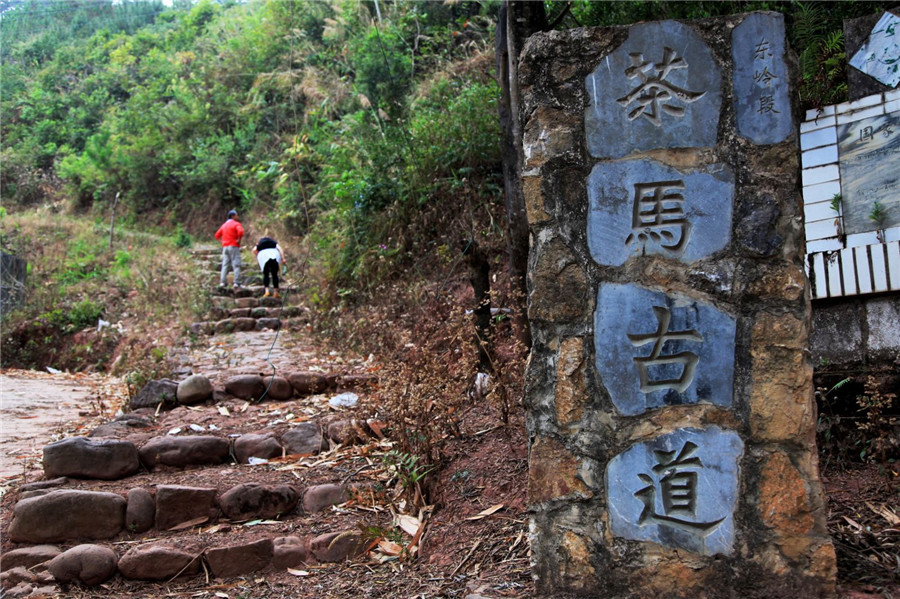
Eat salty cheese in Lijiang. Lijiang, in northern Yunnan, is the stronghold of the Naxi people. Naxi cuisine features more dairy than traditional Han Chinese fare, because people living close to the mountains were pastoral, relying on cattle for milk and meat. Cheese here is like a salty mozzarella, akin to Middle Eastern haloumi, and comes white and chilled, or melted and golden brown. One of the specialties is a hot dish with meat and cheese that tastes like deep dish pizza with a spicy Asian twist, with chili peppers instead of tomatoes and sometimes Sichuan peppercorns thrown in. The Naxi also specialize in Naxi Baba, a bread served with a fried cheese they call rubin (“roo-bean”).
Get a guide for wilder hikes. Much of China is paved over, and the towns and cities on this route have populations in the millions and tens of millions, but there is wilderness too. Many excellent hikes—such as Tiger Leaping Gorge or routes exploring the Tang-era temples and salt mines near Shaxi, the nunneries in Tagong and the hot springs under Mount Kailash—require only a backpack and good sense. But the best hikes are the wildest ones deep in western Sichuan, where you can drive for hours and see only waterfalls and peaks, or in western Yunnan and some of Asia’s great rivers and mountain ranges. For these wilder hikes you should hire a local guide for safety and convenience. There are several in Chengdu, Kunming, Lijiang and Dali that specialize in taking groups into the mountains. They deal with transportation, horses for the climb, tents for the fitful, high-altitude nights, and food for the whole trip. Wild China is one of the better ones. For bicycle tours, check out Bike China in Chengdu.
Get custom bling in Kangding. The seat of Garzê (Ganzi) Tibetan Autonomous Prefecture is a good place to get customized gold and silver jewelry. The raw material isn’t top of the line, but the smiths can replicate designs or help you create your own. Many of the smiths are ethnic Bai people, who have a long history of silversmithing and came here from the region around Dali and Shaxi. Their biggest clients are Tibetan women, so they’ve followed the business to Kangding.
“Cross the Bridge” in Yunnan. On the route’s southern reaches, the food defaults to the more classical Chinese rice and noodles—but heavier on the noodles. The famous Yunnan dish is Crossing the Bridge Noodles, a take on the Southeast Asian style of serving the noodles and broth with meat and veggies on the side. I like to get mine at Heavenly Manna in Kunming, just a few blocks away from Cui Hu Park next to Salvador’s Coffee House.
Sort out the Laos visa beforehand. You need a visa to get into Laos from Yunnan, China. You can get one in Kunming at the Laotian consulate, or if you want to push it, in the border town of Mengla, where the huge casino looms over everything. I highly recommend getting all of your visas in order before you arrive at the border. Make sure your Chinese visa is not overstayed and make sure you enter before your visas to Laos or Thailand expire. Failing to have your visas in order will mean delays, wasted money, and other hardships. I learned the hard way.
Jinhua Ancient Town(Jianchuan Ancient Town)
Jinhua Ancient Town (金华古城)was built in 21 year of Jiajing Period of Ming Dynasty, enjoying the history of more than 650 years. The orignal wall of the town was destoryed in 1952. The alleys and streets of Ming Dynasty were maintained, including the layout and size. Jianchuan Ancient Town enjoys the unique architecture which covers more than 40 ancient buildings of Ming Dynasty and 146 ones of Qing Dynasty, with 21 well-preserved gardens. The layout of Jianchuan Ancient Town represents the influence of Confuciunism in Dali and retains the chessboard layout of Ming Dynasty. Jianchuan enjoys the long and perofound history and splendid ethnic culture. Today, Jianchuan still keeps the traditional arts and religional culture.
Where is Jinhua Ancient Town?
Jinhua Ancient Town is located in the north of Dali Prefecture and west of Yunnan Province. It is the most populous county in terms of Bai people in China. In ancient time, Jianchuan was the hub of cultural exchange of Han and Tibetan.
Hometown of Wood-carving—Jianchuan
Jianchuan is famous for its wood carvers. When driving into town, you may drive by a few workshops and in the streets of the old town, look at the wooden doors exquisitely carved by local craftsmen who decorated the panels with flowers, traditional patterns or legendary animals like the kirin (麒麟) straight from the Chinese mythological bestiary. In Yunnan, Jianchuan craftsmanship enjoys such a good reputation so that some locals travel all around the province. The Ancient Tea and Horse Road (茶马古道), the legendary trade route that has allowed for the dissemination of Jianchuan’s wood craftsmanship in southwest China.
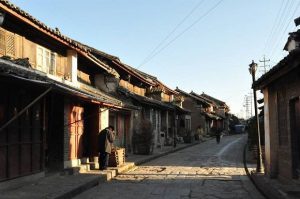
Architecture
The layout of Jianchuan Ancient Town represents the influence of Confuciunism in Dali and retains the chessboard layout of Ming Dynasty. The architectures of Jianchuan Ancient Town are residencial houses of Bai people, which take a lot of ethnic skills in terms of -wood-carving, stone-carving etc. Jianchuan is knowns as the Town of Wood-carving in China.
Old Residences from the Imperial Era
During the Ming Dynasty (1368 – 1644), the development of trade on the old Tea and Horse Road (茶马古道) has allowed for the emergence of a class of merchants, scholars and officials who built imposing courtyard mansions all hidden behind magnificent wood and stone gates.
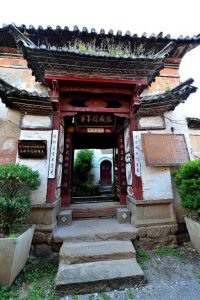
The details of the stories behind this historical figures, their deeds and accomplishments is embedded in the intricate meanders of local histories. In the streets of Jianchuan Ancient Town, there is a dozen of ancient residential buildings which were built between the early years of the Ming Dynasty and the late Qing Dynasty (1644 – 1911) and that are now protected as historical heritage site at the provincial level.
Useful Travel Tips
If you are going back to Shaxi after visiting the Qianshi Shan (千狮山) before going on with your itinerary, or are in transit in Jianchuan, the old town definitely deserves a couple of hours of your time.
When the weather is fine in Dali, the sunshine is heated, and ultraviolet light is strong. People should avoid direct sunlight, and the sun hat preparation is required during outdoor activities, a pair of sunglasses will make you comfortable in the trip.
Nearby Attraction
Shimen Ancient Town of Yunlong County is one of the Best Tourist Attractions and Top Things to Do when travel to Dali, it introduces the main scenic spots, address, entrance tickets booking, The best time to visit, How to Get there, the highlights, facts, history, photos, visiting routes, travel tips, tour maps of Shimen Ancient Town of Yunlong County.
Chinese Name:大理云龙县石门镇
English Name: Shimen Town of Yunlong County, Dali
http://ylx.gov.cn/view/front.article.articleView/10351/32/805.html
Mizhi Town of Midu County is one of the Best Tourist Attractions and Top Things to Do when travel to Dali, it introduces the main scenic spots, address, entrance tickets booking, The best time to visit, How to Get there, the highlights, facts, history, photos, visiting routes, travel tips, tour maps of Mizhi Town of Midu County.
Chinese Name:大理弥渡县密祉乡
English Name: Mizhi Town of Midu County in Dali
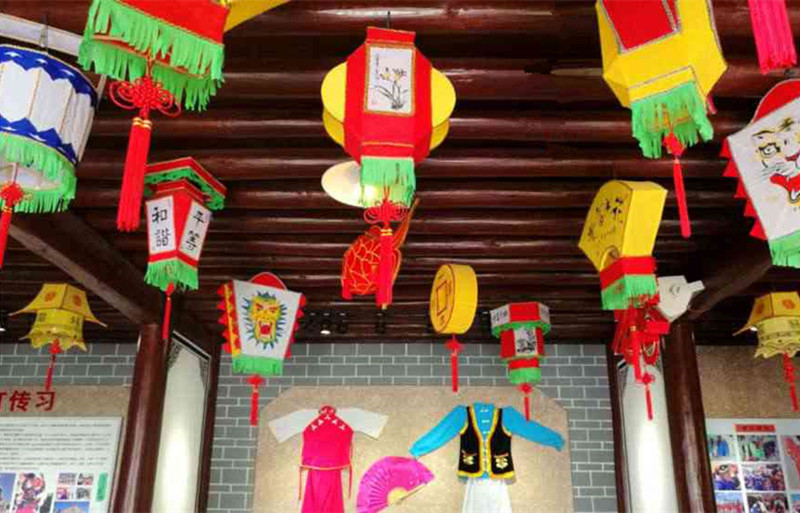
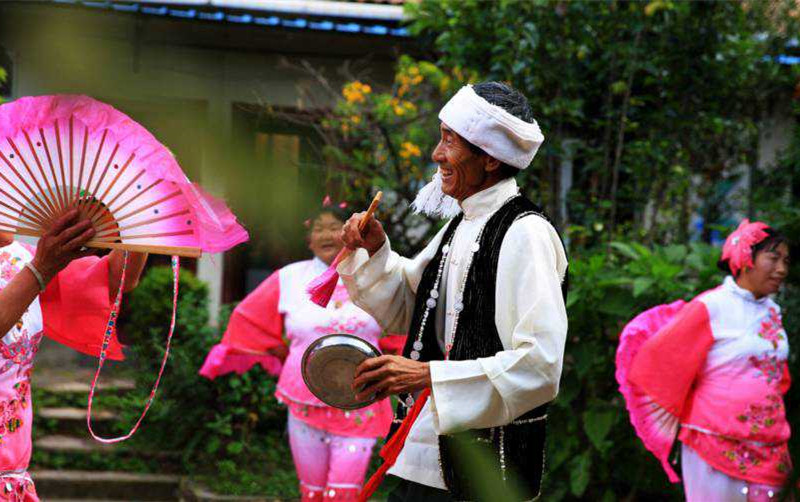
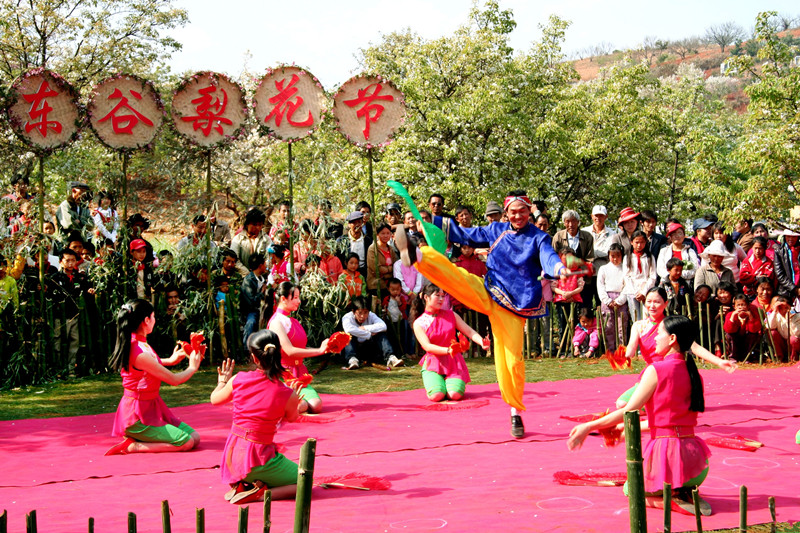
Overview
Yunlong Bridge (云龙桥) is located over the Yangbi River Canyon (漾濞江峡谷) in Yangbi County (漾濞县), Dali (大理). Locally known as the “Tie Chain Bridge” (铁链子桥) or “Suspension Bridge,” it is the only surviving ancient iron chain suspension bridge on the Bunan Ancient Road (博南古道) and is recognized as the oldest existing suspension bridge in China. Yunlong Bridge is situated approximately 40 kilometers northwest of Dali City (大理市), spanning the Yangbi River, a tributary of the Lancang River (澜沧江). It is located south of Yangbi Shangjie Town (漾濞上街镇). The bridge was built during the Ming Dynasty (明代) and has a history of over 500 years. It continues to connect both banks of the river with its old, rough iron chains. At the entrance of the bridge, there is a newly erected stone tablet that recounts the history of Yunlong Bridge.
A legend tells that one morning, a streak of colorful clouds appeared at the western corner of Yangbi Ancient Town (漾濞古镇), stretching across the river like a dragon crossing the waters. The locals believed it was a divine dragon revealing itself, indicating a new bridge site. Consequently, they built the iron chain bridge on that spot, which became a notable sight known as “Iron Lock Cloud Dragon” (铁锁云龙). After enduring over 500 years of weathering, Yunlong Bridge silently preserves the memories of travelers and merchants who once rested here along the ancient Bunan trading route, watching the clouds rise and fall.
Structure
Yunlong Bridge is oriented east to west and features eight long iron chains parallel on both banks, supporting the bridge deck. The total length of the bridge is 40 meters, with a width of 3.2 meters and a height of 12.7 meters. Pavilions are installed on the bridge piers. Historical evidence from the Dong family genealogy (董氏家谱), which was relocated from Xizhou (喜州) to Yunlong County, confirms that the bridge was constructed after the Ming Chenghua period, specifically during the Hongzhi period (公元1488~1505年).
Historical Development
Yunlong Bridge is documented in Yang Shen’s (杨慎) “Records of Yunnan Journey” (滇程记) and Xu Xiake’s (徐霞客) “Travel Notes.” According to the “Chronicles of Yongchang Prefecture” (永昌府志), the bridge underwent repairs in the 13th year of the Kangxi era (公元1674年) and the 3rd year of the Guangxu era (公元1870年) by Governor Nuomutu (诺穆图) and General Jiang Zonghan (蒋宗汉) from Tengchong (腾越).
On August 24, 1966, a devastating flood destroyed the eastern bridge pier. The bridge was restored from winter 1994 to spring 1996. Following its restoration, a continuous stream of merchants and horse caravans traversed through Yangbi, and Yunlong Bridge remains a vital passage on the Bunan Ancient Road, playing an irreplaceable role in the daily lives of local residents. Legend has it that every 30 to 50 years, the bridge requires major repairs.
In 1993, Yunlong Bridge was designated as a key provincial cultural relic protection unit.
Legend
A beautiful legend surrounds the Yunlong Ancient Bridge: it is said that people attempted to build multiple large bridges over the Yang River (漾江) for easier transportation, but all collapsed due to the swift river currents and mountain floods. Just when the locals were despairing of ever constructing a bridge, they saw a rainbow rise over Cangshan (苍山), resembling a giant dragon arching over the Yangbi River. A fairy crossed the river on the rainbow, inspiring the people to build the bridge where the rainbow touched down, leading to their success. Thus, the bridge was named “Yunlong Bridge” (云龙桥).
How to Get There
By Bus
- From Dali City (大理市): Take a bus to Yangbi County, which takes about 1-1.5 hours.
- From Yangbi County: Use local transport like taxis or motorbike taxis to reach Yunlong Bridge.
By Car
If driving, renting a car in Dali is a viable option. The distance from Dali City to Yunlong Bridge is about 70 kilometers, approximately a 1.5-hour drive. Follow signs to Yangbi County and then to the bridge location.
Travel Tips
- Best Time to Visit: Spring and autumn are ideal for pleasant weather and beautiful scenery.
- Photography: Capture stunning views of the bridge against the backdrop of the canyon.
- Respect Local Customs: Acknowledge the cultural significance of the site.
- Comfortable Footwear: Prepare for walking and exploring the surrounding area.
- Explore Nearby Attractions: Consider visiting other historical sites along the Bunan Ancient Road for a fuller experience.
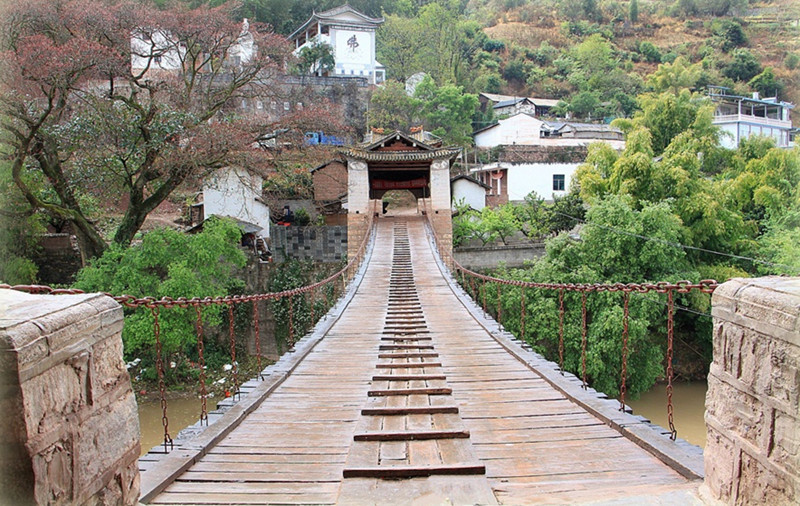
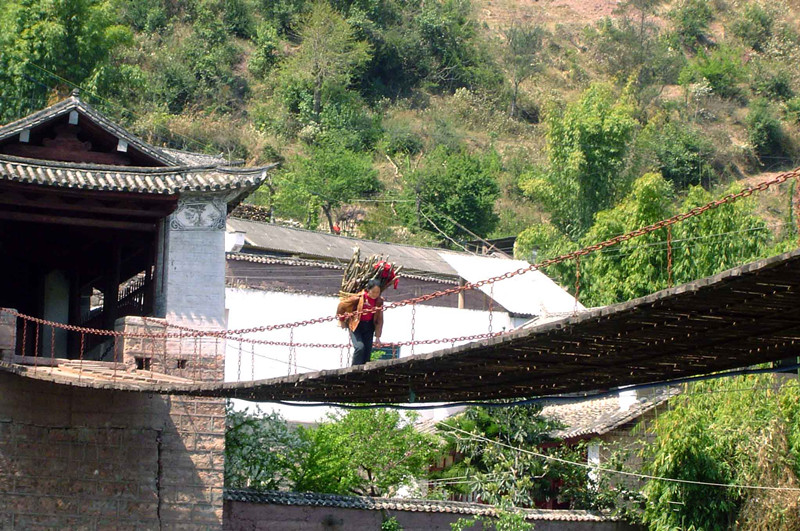
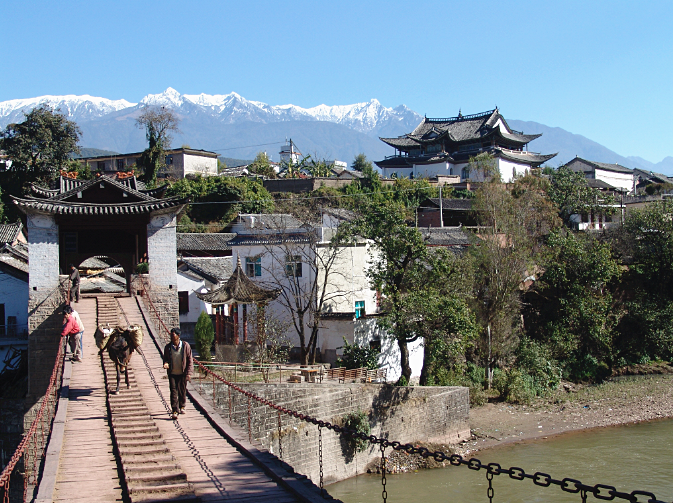
Mizhi Old Town (密祉镇) is located in the southwest of Midu County, Dali Bai Autonomous Prefecture, Yunnan Province (云南省大理白族自治州弥渡县). It borders Juali Town (苴力镇) to the east, Nanjian Yi Autonomous County (南涧彝族自治县) to the south, Weishan Yi and Hui Autonomous County (巍山彝族回族自治县) to the west, and Yinjie Town (寅街镇) to the north, approximately 30 kilometers from the county seat of Midu. The total area of the region is 132.05 square kilometers, and by the end of 2019, Mizhi had a registered population of 16,473.
Historical Background
The history of Mizhi dates back to the Western Han Dynasty (西汉), specifically in the second year of the Yuanfeng era (前109年) when Emperor Wu of Han (汉武帝) dealt with the southwestern tribes, leading to a migration of Han Chinese settlers to the area. In 2014, Mizhi Township (密祉乡) was officially upgraded to Mizhi Town. As of June 2020, Mizhi Town governs six administrative villages, and the town government is located at No. 5 Dasi Street (大寺街).
By the end of 2019, Mizhi had three industrial enterprises and eight comprehensive stores or supermarkets with an area exceeding 50 square meters. Mizhi is renowned for its title “Three Towns, Two Regions, and One Ancient Path” (三乡两区一古道), which refers to its cultural significance as the hometown of Chinese lanterns, the cultural hub, and the birthplace of the famous song “Little River Flows” (《小河淌水》). The two regions are the Taijishan Provincial Scenic Area (太极山省级风景名胜区) and the Mizhi Revolutionary Old Area (密祉省级革命老区). The ancient path refers to the Wensheng Street Tea Horse Ancient Road (文盛街茶马古驿道).
In September 2021, the “Little River Flows·Mizhi Scenic Area” (小河淌水·密祉景区) was successfully established as the first national 3A-level tourist attraction in Midu County.
Mizhi Scenic Spot Guide
1. Mizhi Grand Temple (密祉大寺)
Mizhi Grand Temple is the oldest and largest ancient temple in the Mizhi area. Inside, you can find sacred halls and the Jade Emperor Pavilion (玉皇阁), from which visitors can enjoy panoramic views of the entire Mizhi region. This spot is characterized by the poetic sentiment: “端居碧罗千寻高也明也不可阶而升也,捧出红云一朵成乎焕乎其如视诸斯乎”.
2. Lantern Square (花灯广场)
Mizhi is a recognized source of national intangible cultural heritage, specifically for its lantern folk songs. As one of the renowned “Hometowns of Lantern Art in China,” it hosts the largest existing ecological lantern festival. The Mizhi Lantern Festival (密祉元宵灯会) has been listed as a representative item of the fifth batch of provincial-level intangible cultural heritage in Yunnan.
With continuously improving infrastructure, the unique architecture of Lantern Square shines brilliantly at night.
3. Republic of China Fifth District Office (民国第五区区公所)
This site was the former office of the National Government, established in the 20th year of the Republic of China (1931). It features a three-room, one-screen wall layout typical of civil engineering structures.
4. Wensheng Street (文盛街)
Wensheng Street is the core area of the Little River Flows Mizhi Scenic Area and an essential station on the ancient “Silk Road.” This ancient tea horse road is a national cultural heritage site, with Wensheng Street Village recognized as a historical and cultural village in China.
5. Kuixing Pavilion (魁星阁)
The statue of Kuixing (魁星) inside the pavilion stands proudly, symbolizing the assessment and support of scholars. The phrase “独占鳌头” (to take the lead) originates from this imagery, reflecting the historical richness of Mizhi, especially during the Ming and Qing dynasties.
6. Wenchang Palace Confucian Academy (文昌宫国学馆)
Designed and built by local carpenter Liu Jing’an (刘京安), Wenchang Palace serves as an important venue for traditional cultural activities, including the worship of Confucius and the promotion of patriotic education.
7. Horse Shops (马店)
These shops catered to the horse caravans that traveled along the ancient tea horse road, especially during the Ming and Qing dynasties. The famous Mizhi night market was bustling with activity, featuring local merchants selling rice, fodder, and textiles.
8. Horse Caravan Culture Exhibition Hall (马帮文化陈列馆)
This hall showcases artifacts related to horse caravan culture, including lamps, saddles, and farming tools, alongside videos that depict the former prosperity of the Wensheng Street ancient road.
9. Yinyi Gong’s Former Residence (尹宜公故居)
Renowned for arranging the lyrics of the famous folk song “Little River Flows” (《小河淌水》), Yinyi Gong (尹宜公) was born here. The residence features a multi-dimensional display system detailing his life and the song’s significance.
10. Ancient Opera Stage (古戏台)
Local artists perform various folk plays here, with nearly a hundred traditional operas still being staged, reflecting the local culture and traditions.
11. Folk Song Cultural Park (民歌文化园)
This park aims to promote the rich folk song culture of Mizhi, showcasing the traditional music and enhancing the local tourism industry.
12. Phoenix Bridge (凤凰桥)
One of the most famous ancient bridges on the old post road, Phoenix Bridge has stood for nearly a millennium and was listed as a national key cultural relic protection unit in 2013.
13. Pearl Spring (珍珠泉)
This ancient well dates back to the mid-Qing Dynasty (清代中叶) and features sweet, clear water that flows throughout the year, making it a beloved spot for locals.
14. Anlewo Camping Base (安乐窝露营基地)
This campsite integrates lantern culture, Mizhi cuisine, and recreational activities, providing a unique outdoor experience.
15. Osmanthus Forest (桂花箐)
Home to a 1,800-year-old osmanthus tree, this area is celebrated for its natural beauty and sweet, fragrant blossoms.
16. Taiji Peak (太极顶)
Located at the junction of Cangshan Mountain (苍山) and Ailao Mountain (哀牢山), this state-level nature reserve is known as a “Plant Kingdom” and a “Natural Oxygen Bar.”
Culinary Journey—Mizhi Food Guide
When in Mizhi, don’t miss the tofu feast (豆腐宴). Made from the pure spring water of Pearl Spring, this local specialty showcases the versatility of tofu in various culinary styles, sure to delight your taste buds.
Peaceful Retreat—Mizhi Accommodation Guide
After a full day of exploration, find a comfortable boutique homestay to unwind and enjoy the local charm.
Mi Duo Boutique Homestay (蜜多精品美宿)
Located next to Lantern Square, this high-end homestay features traditional architecture and is designed with elements of the five Chinese elements.
Gu Yi Xian Ju (古驿闲居)
This guesthouse offers a rustic atmosphere with traditional wooden architecture, serving delicious local dishes.
Efficient Travel—Mizhi Transportation Guide
- By Car:
- From Dali (大理) to Mizhi, take the Hangrui Expressway (杭瑞高速) and then follow local roads. The journey takes about 1 hour and 40 minutes.
- By Bus:
- Route A: Take a bus from Dali Passenger Transport Station to Midu (弥渡) and transfer to a local bus to Mizhi. Total travel time is about 2.5 hours.
- Route B: Take a high-speed train to Xiangyun (祥云) and then transfer to a bus to Mizhi.
Travel Tips
- Best Time to Visit: Spring and autumn are ideal for enjoying pleasant weather and local festivals.
- Cultural Etiquette: Respect local customs, especially in religious sites.
- Local Specialties: Try the local tofu dishes and explore the vibrant night market for street food.
How to Get There
To reach Mizhi from major cities like Dali, driving or taking a bus is the most convenient option. Ensure to check bus schedules in advance as they may vary.
With its rich culture, stunning landscapes, and delicious food, Mizhi Old Town offers a memorable experience for every traveler.
Day Trip to Mizhizhen: A Mountain Town
? Overview
Mizhizhen is a quiet little town located in the mountains and is one of the filming locations for Liu Yifei’s drama “A Place with Wind.” From Midu County, it’s a 30-kilometer drive to Mizhida Temple, which includes a short stretch of winding mountain road.
? Mizhida Temple
According to the historical records of Midu County, Mizhida Temple was built in the early years of the Qing Dynasty in 1736. The front courtyard features a Hall of Guansheng, dedicated to Guan Yu. After ascending a few steps, you reach the back courtyard, where the main building, Yuhuang Pavilion, is located. The pavilion is inscribed with the words “Ziwei Wujii” (紫薇无极). Though the temple is not large, it exudes a serene atmosphere, with the air filled with the scent of incense.
? Local Experience
In the courtyard, you can see elderly people drying their daily food, and there is no commercial vibe here. Just one elderly person is seen preparing meals, allowing one’s heart to quietly settle down.
? Accommodation
A short distance away is a guesthouse. In the middle of the courtyard, there is a shallow water surface reflecting the natural scenery—an absolutely stunning design where each angle offers a different beautiful view.
? Tea Room
The first floor of the main building features a tea room that is tranquil and elegant.
? Wensheng Street Ancient Village
After a 10-minute walk, you’ll arrive at Wensheng Street Ancient Village, adorned with lanterns hanging in the air. This street historically served as a stop on the ancient South Road, and it retains a well-preserved ancient village style, featuring stone paths and two-story wooden houses, with corn drying everywhere under the bright blue sky. The commercial-free atmosphere makes the ancient town feel like a picturesque painting.
? Village Entrance
At the end of the street, you’ll find the village entrance, which is also a filming location for “A Place with Wind,” marked by a small grocery store. Continuing further leads to a small park by a flowing creek. Passing through a small archway, you will arrive at the Pearl Spring. This spring, excavated in the Qing Dynasty, is one of the most historically significant wells. Its water is crystal clear year-round, gushing day and night, never drying up in droughts and always flowing, with bubbles at the bottom resembling shimmering pearls, thus earning its name, Pearl Spring.
Chinese Version:
https://mp.weixin.qq.com/s?__biz=MzI5MjEwNzkwNA==&mid=2247522140&idx=1&sn=21ed05075f8449dfb6bd1cc90bf723b9&chksm=ed1b4eeb8241f8348e73f10cc009b03679e1a7a0d01d7cbd25d840daae1622b54a73cfba8a76&scene=27
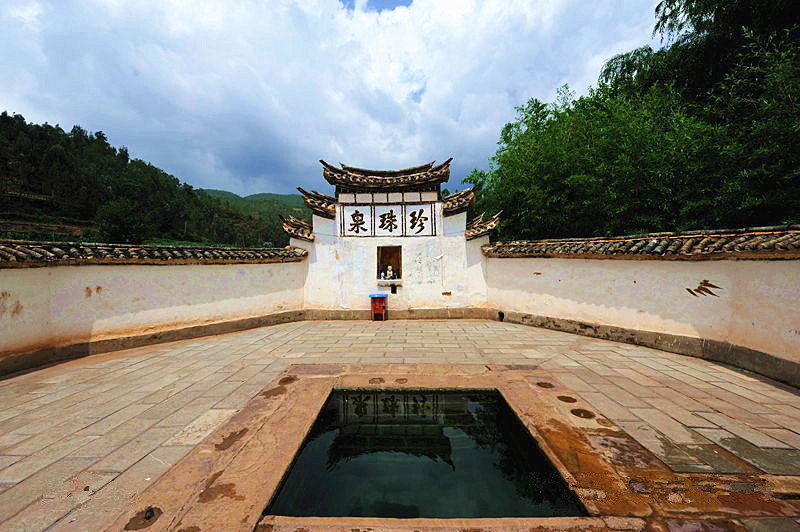
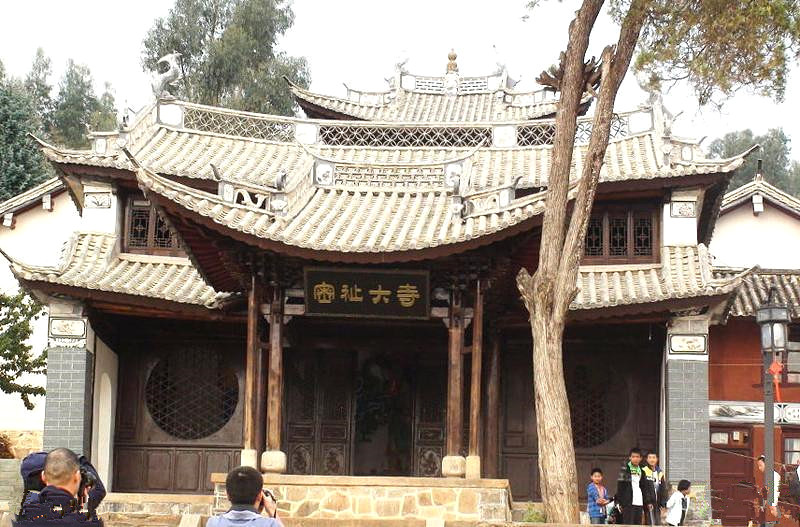

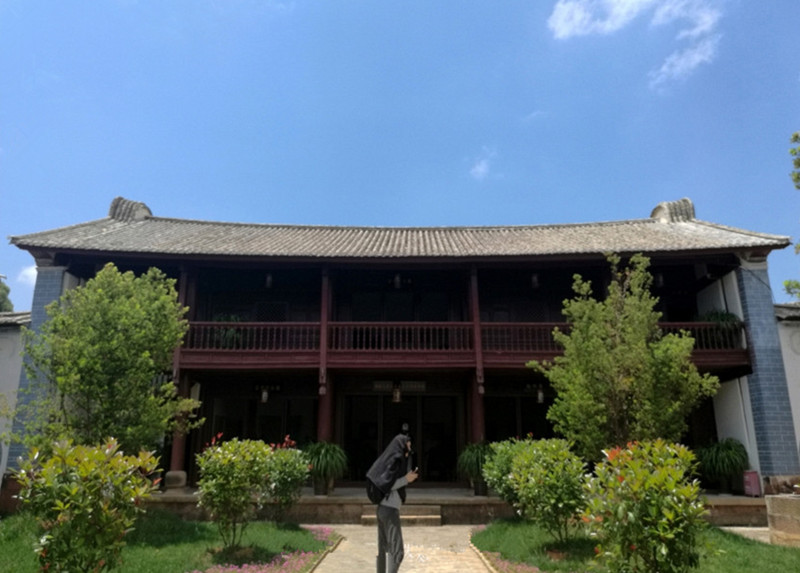
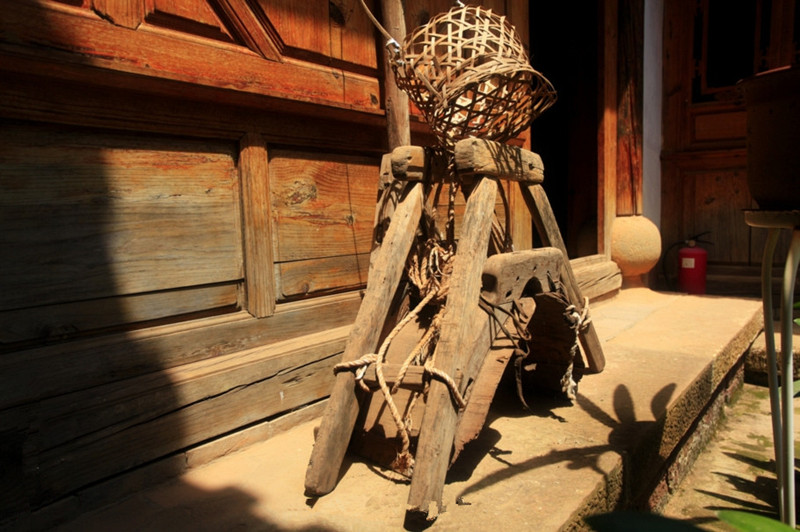
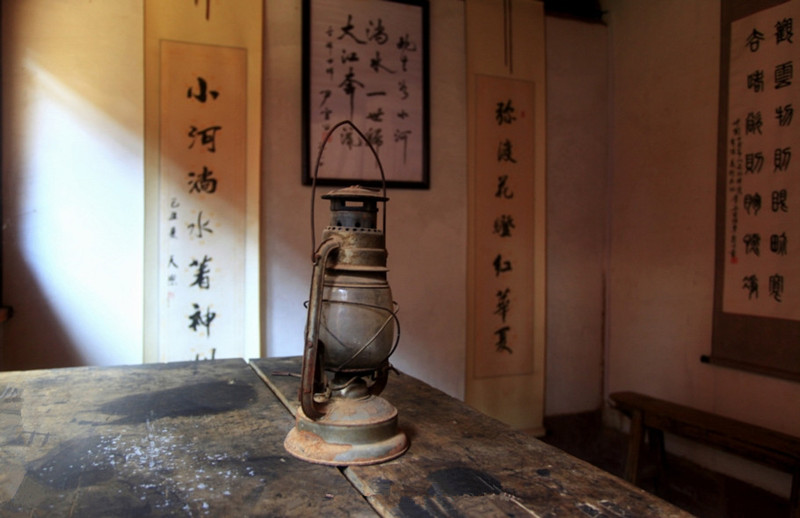
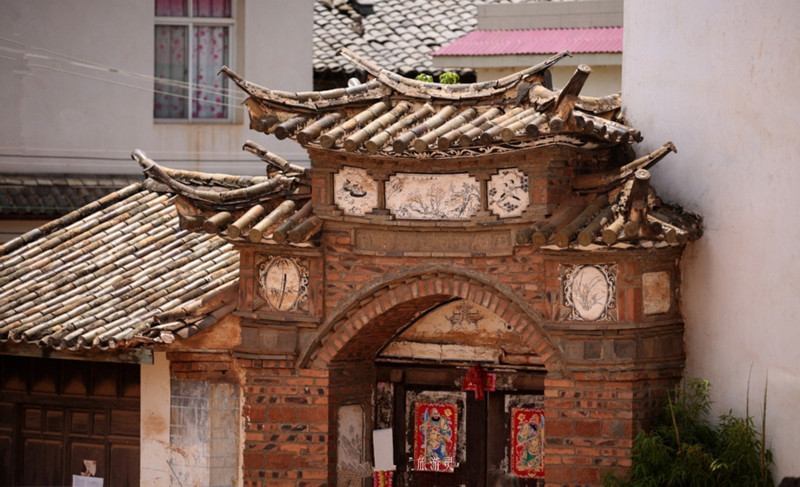
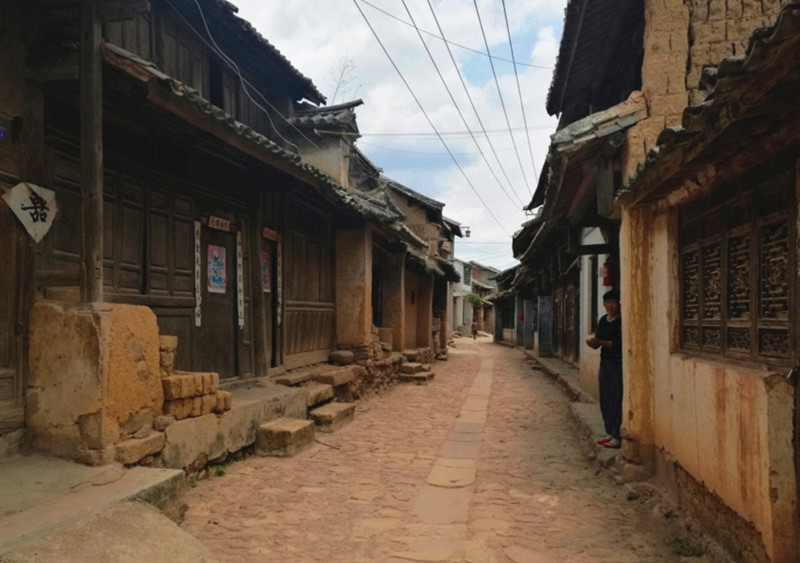
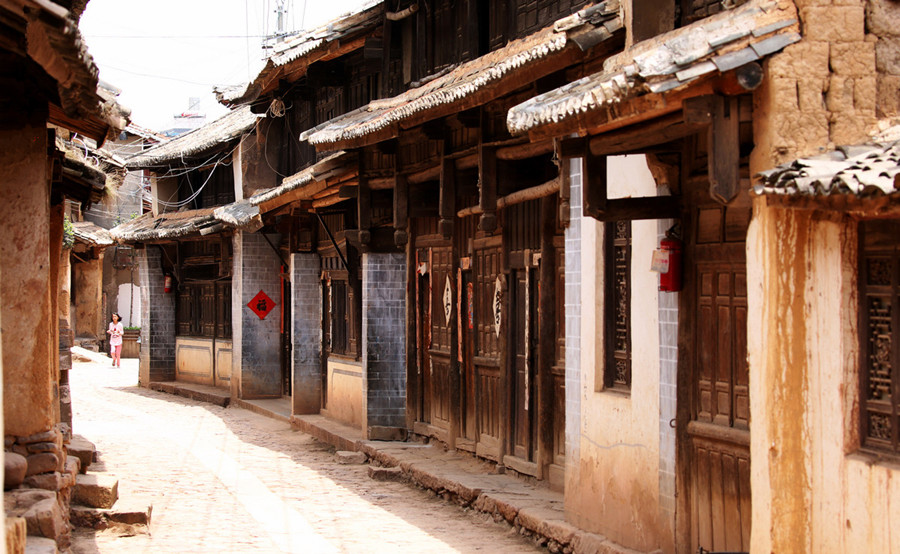
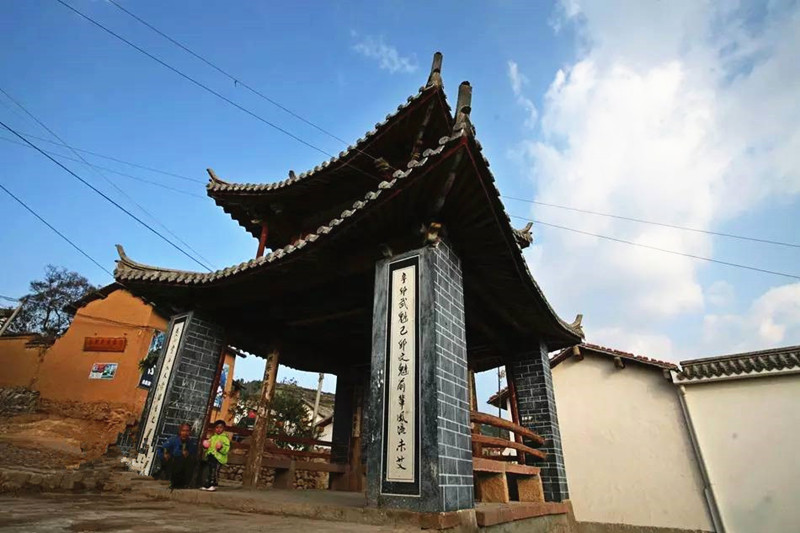
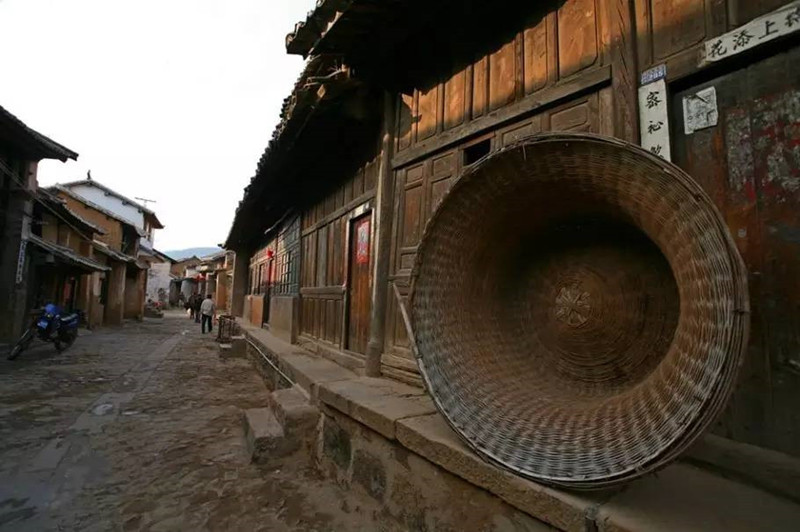
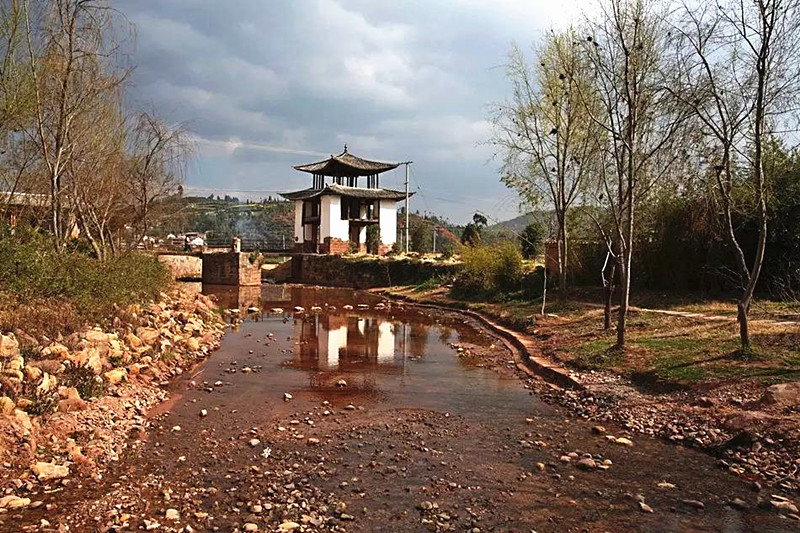
Location:
Location
Location: Located in the Huxi Gorge (虎跳峡) area of Shangri-La County (香格里拉县), approximately 70 kilometers from the county seat.
Description
Description: Twelve Ladders (茶马古道十二栏杆) is a famously treacherous section of the ancient stone-carved path along the Tea Horse Road (茶马古道), known for its narrow and perilous trails cut into the cliffs. This path was a crucial passage before the completion of the Dali-Tibet Highway (滇藏公路).
Historical Significance
Tea Horse Road
The path was an essential and dangerous segment of the ancient Tea Horse Road, which connected Yunnan (云南) to Tibet (西藏). It was vital for traders and travelers before modern roads were constructed.
Dangerous Terrain
The path is carved directly into the cliffs, featuring a sheer drop on one side and a deep gorge on the other. It includes twelve switchbacks, making it a daunting journey. The area earned the nickname “Yin-Yang Boundary” (阴阳界) due to its perilous nature.
Legend of the Twelve Ladders
According to local legend, a giant python lived in a cave along the path and would attack travelers. To protect passersby, the figure of Guanyin (观音), the Bodhisattva of Compassion, is said to have appeared on the cliff face, driving away the python and ensuring the safety of many travelers. In homage to this legend, a depiction of Guanyin has been carved into the cliffside.
Cultural Importance
Cultural Significance
The inscriptions and carvings on Twelve Ladders were made by Han Chinese (汉族) who came to Shangri-La for official duties or trade. These inscriptions are important historical markers of the interactions between Han Chinese and Tibetan regions.
Modern Accessibility
With the completion of the Dali-Tibet Highway, the dangerous journey along Twelve Ladders is no longer necessary. The path is now accessible by vehicle.
Visitor Information
Access
Twelve Ladders is located alongside National Highway 214 (国道214). Visitors can travel by car to Tuguan Village (土官村), cross the Chongjiang River (冲江河), and then proceed on foot to the site. The round-trip can typically be completed within one day.
How to Get There
- By Car: Drive to Tuguan Village and park your vehicle.
- On Foot: Cross the Chongjiang River and walk northwest for approximately two hours to reach the Twelve Ladders.
Travel Tips
- Best Time to Visit: Early morning for fewer crowds and cooler temperatures.
- Safety Precautions: Wear sturdy footwear and be cautious on the narrow paths.
- Bring Water and Snacks: Ensure you have enough supplies for the hike.
- Respect the Environment: Keep the area clean and respect local traditions and legends.
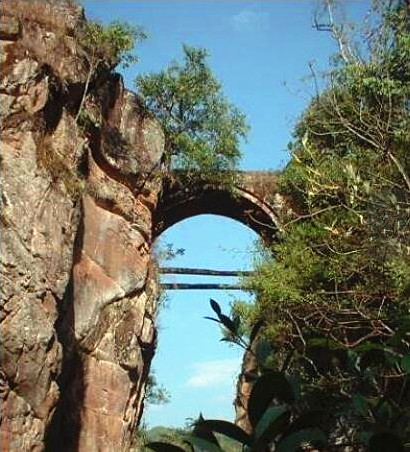

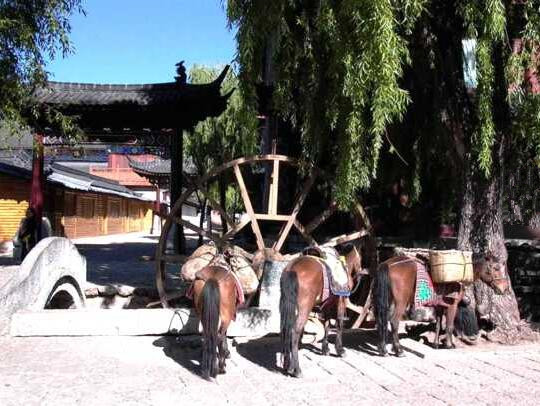
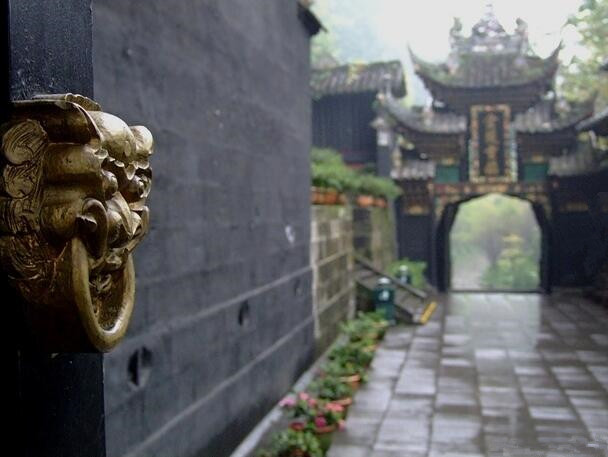
Chinese Name: 盐津县豆沙关风景名胜区
English Name: Doushaguan Pass in Yanjin County, Zhaotong
Overview
Doushaguan Pass, located 20 kilometers from Yanjin County in Yunnan, is a scenic area designated as a provincial-level tourist attraction. It spans approximately 70 square kilometers and includes notable sites such as Doushaguan, Sangushui, Lianhua Cave, and Dali Mountain. The area features a variety of landscapes and historical sites, reflecting its significance as a major gateway in the historical southwest Silk Road.
Main Attractions
- Doushaguan Pass: Known for its rugged ancient trail, Doushaguan is a historic pass that served as a crucial point on the route from Sichuan to Yunnan, and further to Myanmar and India. The remnants of the “Five-Foot Path,” built during the Qin Dynasty, are preserved here, with notable features including uneven stone steps and numerous hoofprints.
- Old Dali Mountain Scenery: Renowned for its striking landscapes, Dali Mountain offers breathtaking views and is a significant feature of the region’s natural beauty.
- Round Hill and Ruyi Peak: Famous for their picturesque formations, these features add to the area’s unique charm.
- Natural Maze: A captivating natural labyrinth that adds an element of intrigue to the visit.
- Rare Flowers and Ancient Trees: The area is home to numerous valuable flower species and towering ancient trees.
- Sangushui Waterfall: A picturesque waterfall that enhances the scenic allure of the region.
- Cultural Relics: The area boasts rich cultural heritage with significant historical artifacts and inscriptions, including the famous Tang Dynasty stele by Yuan Zi, which dates back to 794 AD.
Historical Significance
- Ancient Pathways: Doushaguan, historically known as Shimen Pass, was a critical defensive point in ancient times. It represents the first major barrier for travelers moving from Sichuan into Yunnan.
- Historical Inscriptions: The Tang Dynasty stele by Yuan Zi, a notable calligrapher, marks the historical significance of the area and provides valuable insights into the history of the Tang Dynasty and the Nanzhao Kingdom.
- Archaeological Significance: The Five-Foot Path remains one of the best-preserved ancient roads with a large number of hoofprints, reflecting its historical importance as a major trade route.
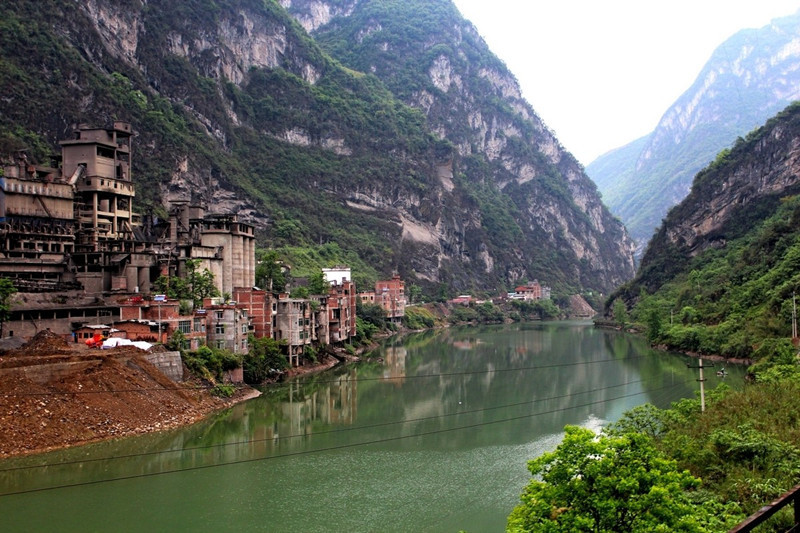
Festivals and Events
- Yanjin County Culinary Competition: The second annual “Yanjin Master Chef” cooking skills competition was held during the May Day holiday. The event, which includes cultural experiences, scenic tours, and local cuisine, highlights the region’s rich history and cultural traditions.
- Cultural Tourism Development: Doushaguan Pass, with its designation as a provincial-level scenic spot and cultural heritage site, continues to attract visitors. The site has evolved into a popular destination for cultural experiences, outdoor adventures, and leisure activities.
Visitor Experience
Doushaguan Pass offers a rich blend of historical significance, natural beauty, and cultural heritage. Visitors can explore the ancient pathways, enjoy the diverse landscapes, and immerse themselves in the local traditions and cuisine. The area stands as a testament to the historical and cultural tapestry of the southwest Silk Road.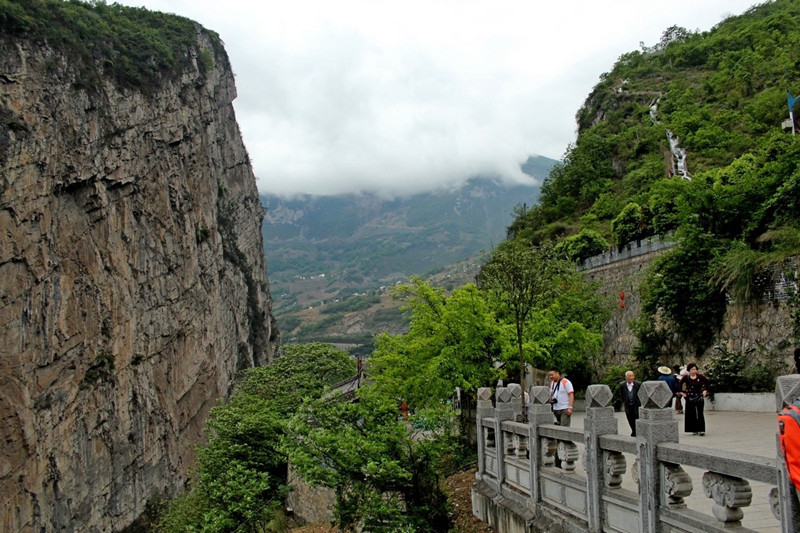
Chinese Name: 腾冲市江苴古镇
English Name: Jiangju Old Town in Tengchong County, Baoshan
Location: Jiangju Village, Quishi Township, Tengchong County, Baoshan City, Yunnan Province
Geography and Climate
Jiangju Old Town is situated in Jiangju Village, in the eastern part of Quishi Township, Tengchong County, Yunnan Province. It is 7.5 kilometers from the Quishi Township government, accessible via a rugged gravel road, making transportation difficult. The town is 41 kilometers from the county seat. It is bordered by Daba Village to the east, Shuanghe Village to the south, Qingqiao Village to the west, and Youtu Village to the north. The village administers 21 sub-villages and 12 natural villages.
The altitude is 1,670 meters, with an average annual temperature of 15°C and annual precipitation of 1,500 millimeters. This climate supports the cultivation of rice, rapeseed, and tobacco.
Overview
Jiangju Old Town is distinct from many other ancient towns, lacking a commercial atmosphere or noisy vendors. Instead, it features rising smoke from cooking fires. The TV drama “My Regiment Commander” filmed many scenes here.
A small river beside the village helps cleanse the dust, and the old blue stone slabs on the streets narrate past glories and dramatic battles.
Historical Significance
Historically, Jiangju Old Town was a vital part of the Silk Road, serving as a bustling post station due to its strategic location. Merchants traveling east would stop here first, while those descending would make it their last stop, making it a crucial supply station for fodder and food.
Local elders recall that up to four to five hundred horses passed through daily, with hundreds of horsemen at times. Streets were once lined with shops and guesthouses, and many backyards had stables.
According to the Li family genealogy, the area was lively with people and horses during its peak, and the vibrant atmosphere is still visible today. The old shops and stables reflect the rich Tea Horse Road culture. It feels as though the mule trains have just departed!
Military History
Jiangju Old Town was a strategic point contested during military conflicts over Tengchong. In May 1942, Japanese forces occupied Tengchong. In May 1944, the Chinese Expeditionary Force’s 20th Army launched an offensive to retake it. The battle was fierce and brutal, with heavy casualties on both sides. Bullet holes on the walls of houses along the streets bear witness to this tragic and intense conflict. Older villagers still vividly remember the war.
Current Atmosphere
Walking through the streets, one can sense the blend of history and reality. It is difficult to distinguish which stone slabs still bear the warmth of horse saddles, which stones were stained with the blood of anti-Japanese soldiers, and which paths were paved with Jiangju people’s hopes and fears. Every stone tells the story of Jiangju Street’s prosperity and tragedy.
Jiangju Old Town is small and modest, lacking the grandeur of other ancient towns. It reflects a history of weariness and bitterness but holds significant historical value for Tengchong. Today, it presents its genuine, unpretentious self to visitors, embodying its past.
The town reflects Tengchong’s historical sorrow and its yearning for the outside world. The once lively bustle has faded, leaving behind a serene, modest, and genuine place. The clear waters of the nearby river and the majestic Gaoligong Mountains nurture this ancient town, which many visitors consider one of China’s most beautiful rural ancient towns.
Baofeng Old Town in Yunlong County, Dali
Baofeng Ancient Town in Yunlong County Baofeng Ancient Town(宝丰古镇) is one of the birthplaces of the ancestors of Yunlong, located in the county seat of Yunlong County, Dali Bai...
Ancient Roads in Yangbi County, Dali
Ancient Roads in Yangbi County is one of the Best Tourist Attractions and Top Things to Do when travel to Dali, it introduces the main scenic spots, address, entrance...
The Ancient Tea Horse Road in China
The Tea Horse Road or chamadao (simplified Chinese: 茶马道; traditional Chinese: 茶馬道), now generally referred to as the Ancient Tea Horse Road or chamagudao (simplified Chinese: 茶马古道; traditional Chinese: 茶馬古道) was a network of caravan paths w ...
Travel Tips and Things You Should Know Before Travel to The Ancient Tea Horse Road
Smart travel along a legendary Asian trade route that takes you to noodles in Sichuan, sweet duck in Yunnan, and on bone-jolting bus rides. Overview of the Tea Horse...
Jinhua Old Town in Jianchuan County, Dali
Jinhua Ancient Town(Jianchuan Ancient Town) Jinhua Ancient Town (金华古城)was built in 21 year of Jiajing Period of Ming Dynasty, enjoying the history of more than 650 years. The orignal wall...
Shimen Ancient Town of Yunlong County, Dali
Shimen Ancient Town of Yunlong County is one of the Best Tourist Attractions and Top Things to Do when travel to Dali, it introduces the main scenic spots, address,...
Mizhi Town of Midu County in Dali
Mizhi Town of Midu County is one of the Best Tourist Attractions and Top Things to Do when travel to Dali, it introduces the main scenic spots, address, entrance...
Yunlong Bridge in Yangbi County, Dali
Overview Yunlong Bridge (云龙桥) is located over the Yangbi River Canyon (漾濞江峡谷) in Yangbi County (漾濞县), Dali (大理). Locally known as the “Tie Chain Bridge” (铁链子桥) or “Suspension Bridge,”...
Mizhi Old Town Scenic Area in Midu County, Dali
Mizhi Old Town (密祉镇) is located in the southwest of Midu County, Dali Bai Autonomous Prefecture, Yunnan Province (云南省大理白族自治州弥渡县). It borders Juali Town (苴力镇) to the east, Nanjian Yi...
12 Handrails of Ancient Tea Horse Road in Shangri-La , Diqing
Location Location: Located in the Huxi Gorge (虎跳峡) area of Shangri-La County (香格里拉县), approximately 70 kilometers from the county seat. Description Description: Twelve Ladders (茶马古道十二栏杆) is a famously treacherous...
Doushaguan Pass in Yanjin County, Zhaotong
Chinese Name: 盐津县豆沙关风景名胜区 English Name: Doushaguan Pass in Yanjin County, Zhaotong Overview Doushaguan Pass, located 20 kilometers from Yanjin County in Yunnan, is a scenic area designated as a...
Jiangju Old Town of Qushi Town in Tengchong City, Baoshan
Chinese Name: 腾冲市江苴古镇 English Name: Jiangju Old Town in Tengchong County, Baoshan Location: Jiangju Village, Quishi Township, Tengchong County, Baoshan City, Yunnan Province Geography and Climate Jiangju Old Town...
Tips Before Travel
Bring copies of your passport
Don't assume you're restricted to the main hubs of Beijing and Shanghai, our tours can start from any city.
Register with your embassy
For your safety, please register with the Embassy.
Always have local cash
Exchange some local currency for your trip
Our Team
Customize a Trip
Start planning your tailor-made holiday to China by contacting one of our specialists. Once enquired, you’ll get a response within 0.5~23.5 hours.
